
The C minor (Cm) chord weaves a tapestry of emotion, blending longing, melancholy, and quiet intensity. Its soft, somber tone makes it a go-to for ballads of unrequited love or songs with a reflective edge. Whether you’re a beginner building your chord repertoire or an intermediate guitarist seeking deeper expression, mastering Cm is a rewarding milestone. This guide inspired by Fender’s clear teaching approach, walks you through playing the Cm chord in its standard and simplified forms, explores its musical structure, and showcases its role in iconic songs. Let’s unlock the soulful sound of Cm with the Tostar TST-112!
Understanding the C Minor Chord
The Cm chord is a minor triad composed of three notes: C, Eb, and G. These notes create its distinctive, heartfelt sound, contrasting with the brighter C major chord. In music theory:
-
C: The root note, anchoring the chord.
-
Eb (E-flat): The minor third, infusing the somber, emotional quality.
-
G: The perfect fifth, adding harmonic stability.
Cm’s relative major is Eb major, and its parallel major is Ab major, making it ideal for minor-key songs that evoke sorrow or introspection. While its finger placement can challenge beginners, practice and the right guitar make it achievable.
Playing the Standard Cm Chord (Barre Form)
The standard Cm chord is played as a barre chord, which can feel daunting due to its stretch and strength requirements. Here’s how to play it correctly:
-
Index finger: Barre across the 3rd fret, covering the A (5th), D (4th), G (3rd), B (2nd), and high E (1st) strings. Press firmly to avoid muted notes, but don’t cover the low E (6th) string.
-
Middle finger: Place on the 4th fret of the B (2nd) string.
-
Ring finger: Position on the 5th fret of the D (4th) string.
-
Pinky finger: Press on the 5th fret of the G (3rd) string.
-
Strum: Play five strings from the A (5th) string down, avoiding the low E (6th) string.
Tab representation:
E|--3---- (index, high E)
B|--4---- (middle)
G|--5---- (pinky)
D|--5---- (ring)
A|--3---- (index)
E|------- (mute)This shape requires even pressure across the barred strings. Practice applying just enough force for clear notes to avoid hand fatigue. If it feels tricky, the simplified version below is a great starting point.
Simplified Cm Chord for Beginners
For beginners, the standard barre chord can be tough, so try this easier Cm variation:
-
Index finger: Place on the 3rd fret of the high E (1st) string.
-
Middle finger: Position on the 4th fret of the B (2nd) string.
-
Ring finger: Press on the 5th fret of the G (3rd) string.
-
Strum: Play only the top three strings (G, B, high E), avoiding the D, A, and low E strings.
Tab representation:
E|--3---- (index)
B|--4---- (middle)
G|--5---- (ring)
D|------- (mute)
A|------- (mute)
E|------- (mute)This version delivers the Cm sound (C, Eb, G) with less finger strain, perfect for beginners or fast chord changes. It’s less resonant but ideal for practice or stripped-down performances.
Tips for Playing the Cm Chord Cleanly
-
Finger placement: Position fingers close to the frets (without touching) for clear notes. Arch fingers to avoid muting adjacent strings.
-
Barre technique: For the standard Cm, slightly roll your index finger toward the nut, using the bony side for better pressure. Start by barring just the A and high E strings to build strength.
-
Hand position: Place your thumb behind the neck, opposite your index or middle finger, for leverage. Keep your wrist relaxed to reduce tension.
-
Check notes: Strum each string slowly to ensure clarity. Adjust pressure or placement if you hear buzzing or muted sounds.
-
Practice transitions: Pair Cm with Eb major, G major, or Ab major, using a 60 BPM metronome to build smoothness.
Common Mistakes to Avoid
-
Over-pressing the barre: Excessive force tires your hand. Use just enough pressure for clear notes.
-
Muting strings: Ensure fingers don’t touch adjacent strings, especially in the simplified version.
-
Strumming the low E: Avoid the 6th string in the standard Cm to keep the sound clean.
-
Rushing the stretch: The standard Cm’s finger spread takes time. Practice finger stretches separately first.
Songs Featuring the Cm Chord
Cm’s emotive power shines across genres. Here are iconic songs to hear its impact:
-
Pop: Adele’s “Rolling in the Deep” uses Cm to drive its soulful intensity, from palm-muted verses to powerful choruses.
-
Rock: Survivor’s “Eye of the Tiger” harnesses Cm’s energy with a motivating beat.
-
Classic Rock: Bon Jovi’s “You Give Love a Bad Name” leverages Cm’s punch for 80s anthem grit.
-
Folk: Ben Howard’s “The Wolves” employs Cm for a sincere acoustic feel.
-
Blues: Led Zeppelin’s “Since I’ve Been Loving You” anchors its bluesy lament with Cm.
Find tabs on Ultimate Guitar, listen for Cm’s somber tone, and practice switching to it within these progressions.

Why the Tostar TST-112 Makes Learning Cm Easier
For beginners tackling Cm, the Tostar TST-112 Electric Guitar Kit is a game-changer. Priced at $139.99, this 39-inch full-size guitar features a slim C-shaped maple neck and tectona grandis fretboard, easing the stretch for barre chords like Cm. Its HSS pickup configuration delivers crisp, articulate tones, ensuring the Cm chord’s notes (C, Eb, G) ring out clearly in both standard and simplified forms. The included 10W amplifier with Hi-Gain and Clean channels enhances Cm’s emotional depth, from soft cleans to gritty overdrive. The kit also includes extra strings, a tuner, capo, strap, picks, cable to guide you through Cm and more. Lightweight at 12.24 pounds and available in nine vibrant colors, it’s a beginner-friendly package that fuels practice. Check it out: https://www.tostarmusic.com/products/tostar-tst-112-39-inch-electric-guitar-s-s-s-pick-up
Practice Routine for Mastering Cm
Dedicate 15 minutes daily for a week:
-
Warm-Up (5 mins): Practice the simplified Cm, strumming each string for clarity. Transition to G major and back, 10 times.
-
Barre Chord Drill (5 mins): Work on the standard Cm, focusing on index finger pressure. Strum slowly, checking each note.
-
Song Application (5 mins): Play along to “Rolling in the Deep” or “Eye of the Tiger,” focusing on Cm’s role.
Use a metronome for consistency and record yourself to track progress. Alternate between standard and simplified Cm for versatility.
Further Learning Resources
-
Online Lessons: Justin Guitar offers free Cm tutorials; Fender Play provides structured chord lessons.
-
Apps: Yousician or GuitarTuna aids chord recognition and tuning.
-
Communities: Join r/guitar on Reddit for tips and feedback.
Conclusion
The C minor chord, with its evocative C, Eb, and G blend, adds soulful depth to your playing. Whether mastering the simplified version or the standard barre chord, practice makes it second nature. The Tostar TST-112’s clear HSS pickups and ergonomic design make it ideal for learning Cm. Dive into songs like “Rolling in the Deep” or “You Give Love a Bad Name” to feel its power, and let Cm inspire your musical journey. Grab your TST-112 and let its somber beauty resonate!

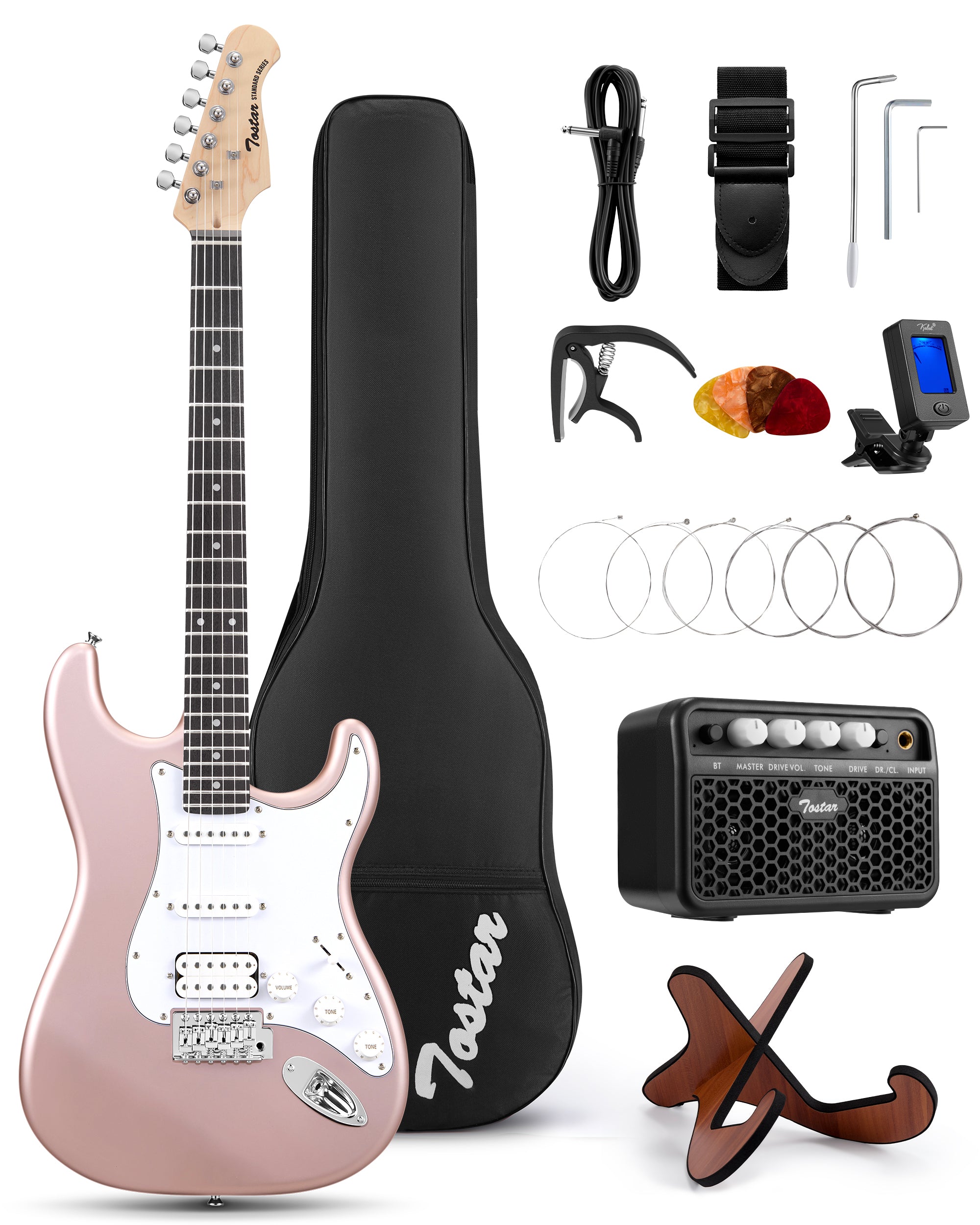
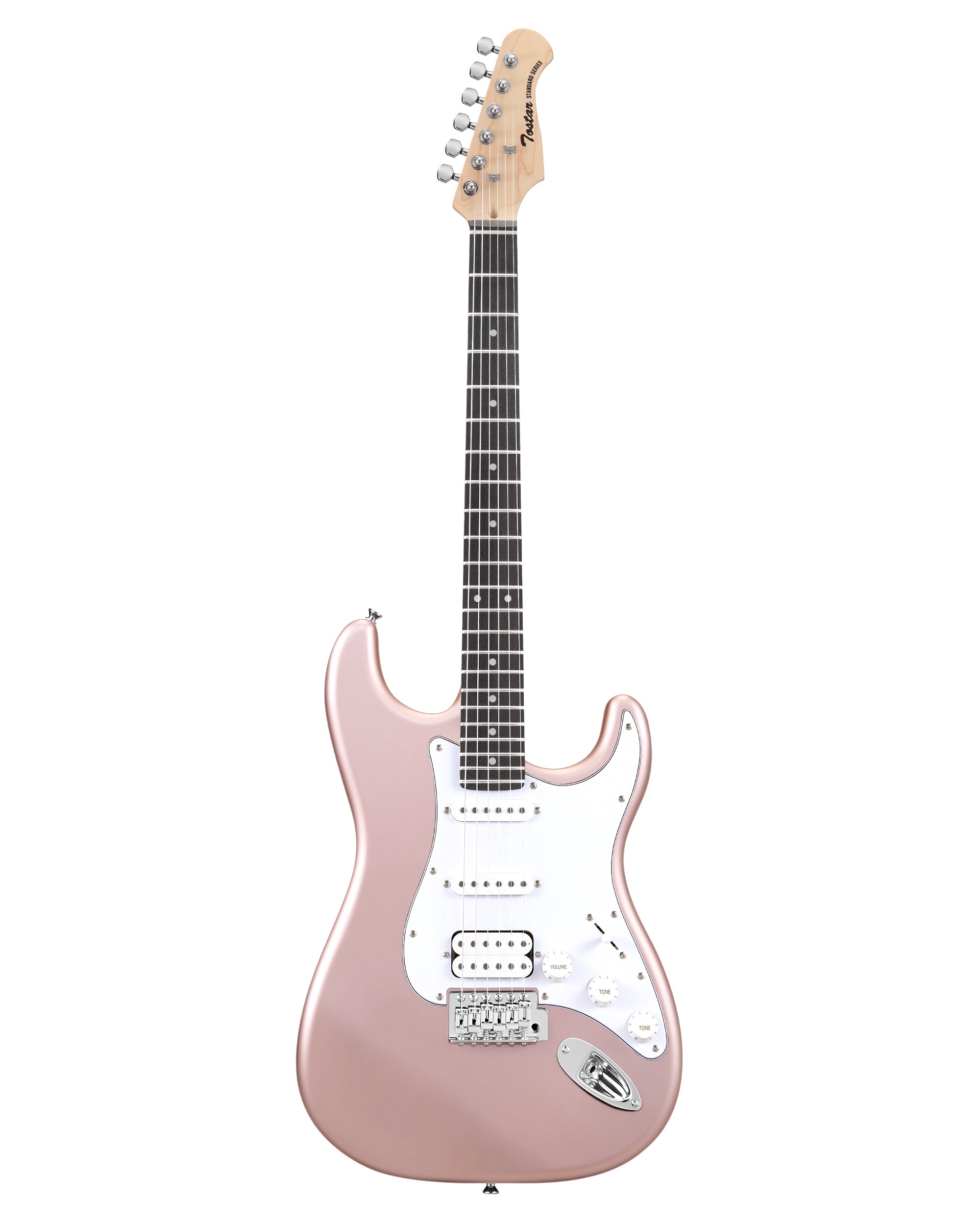
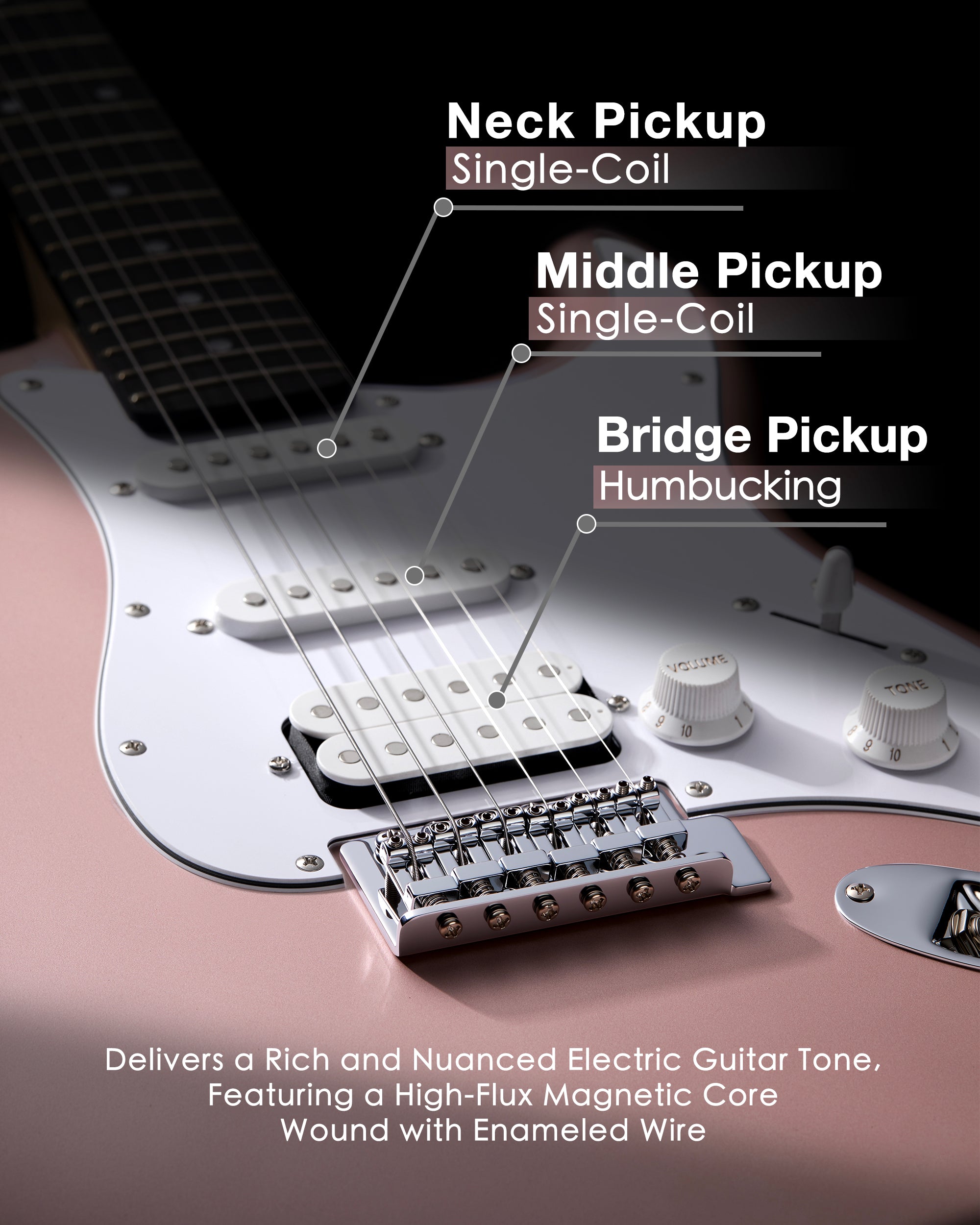
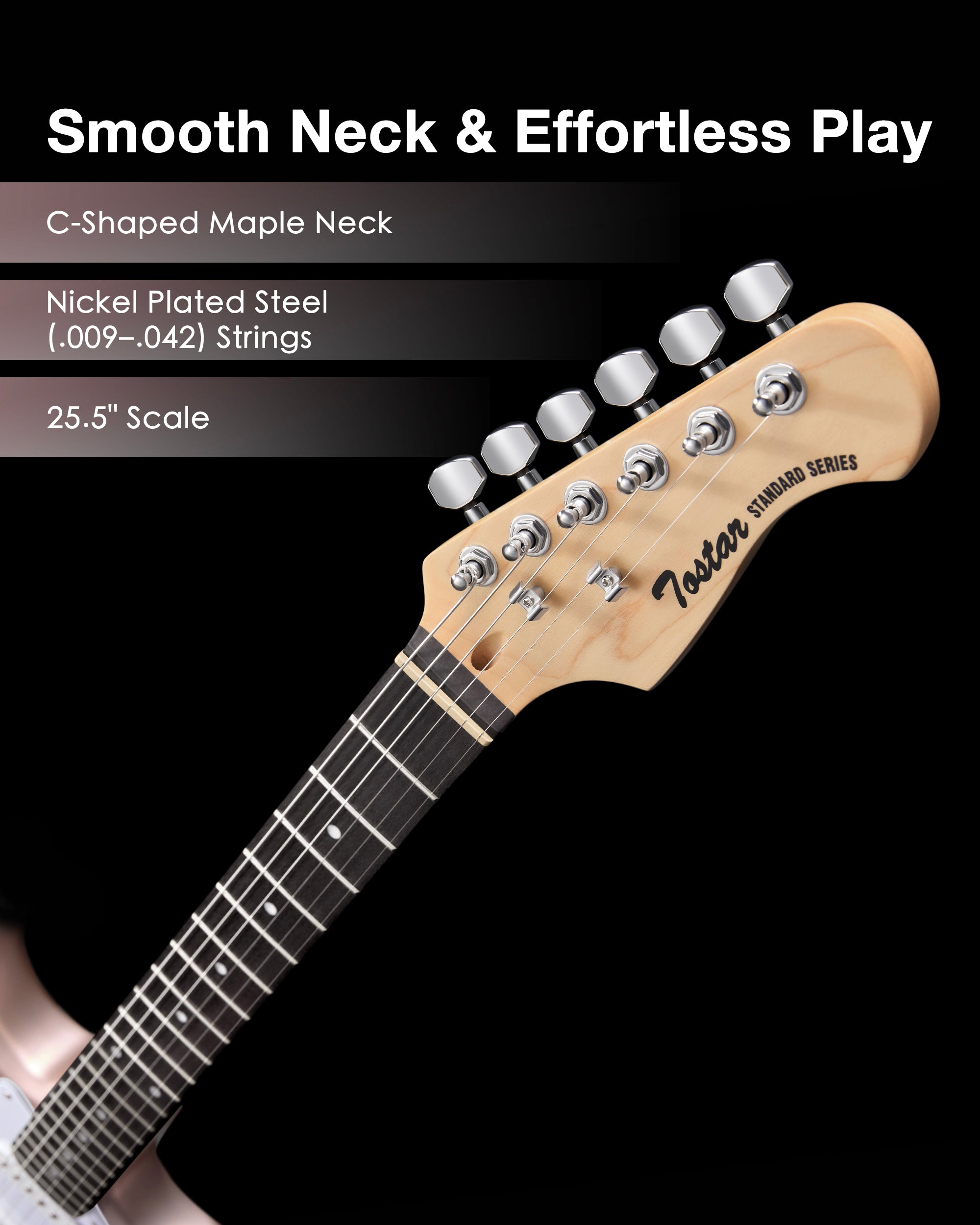





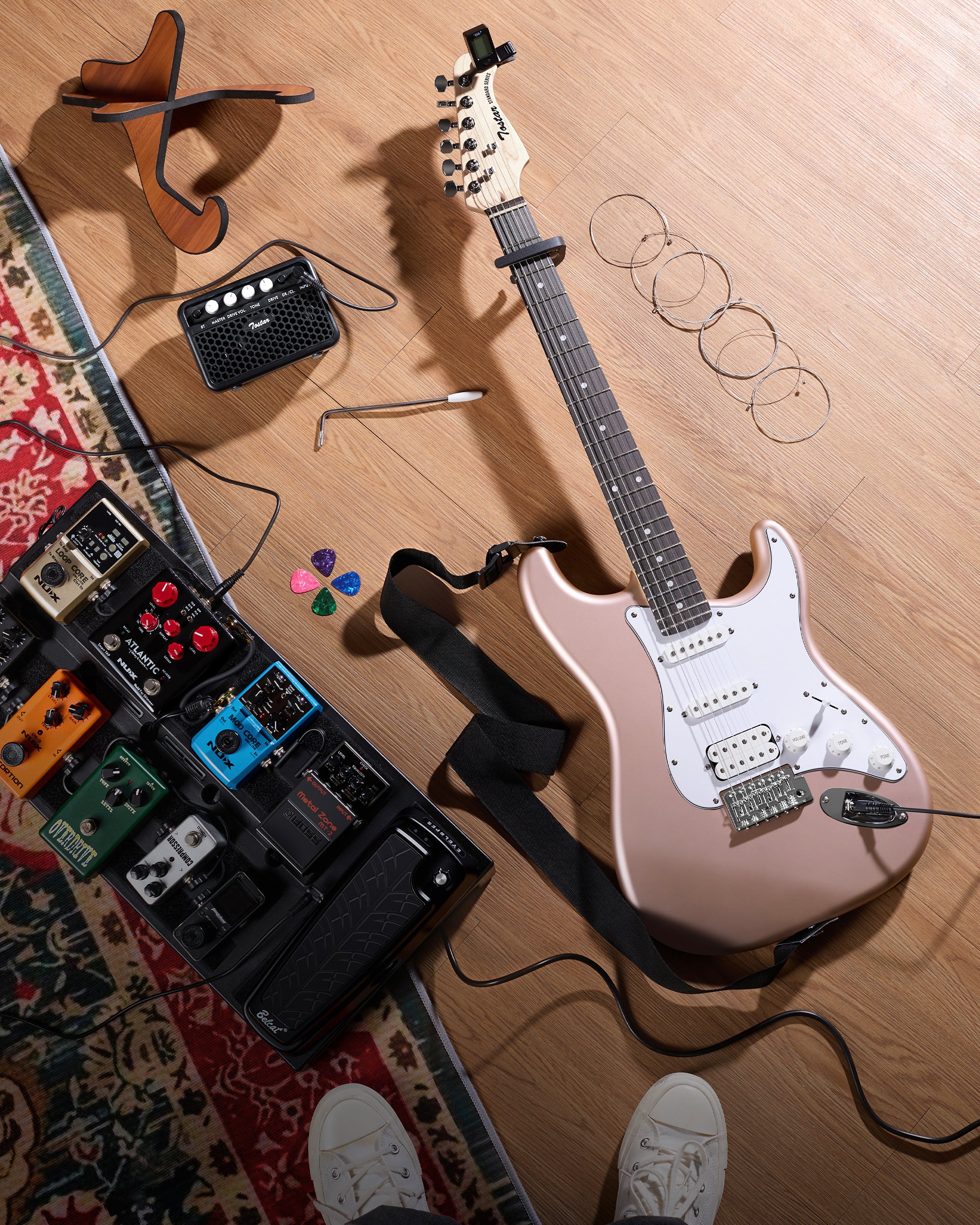
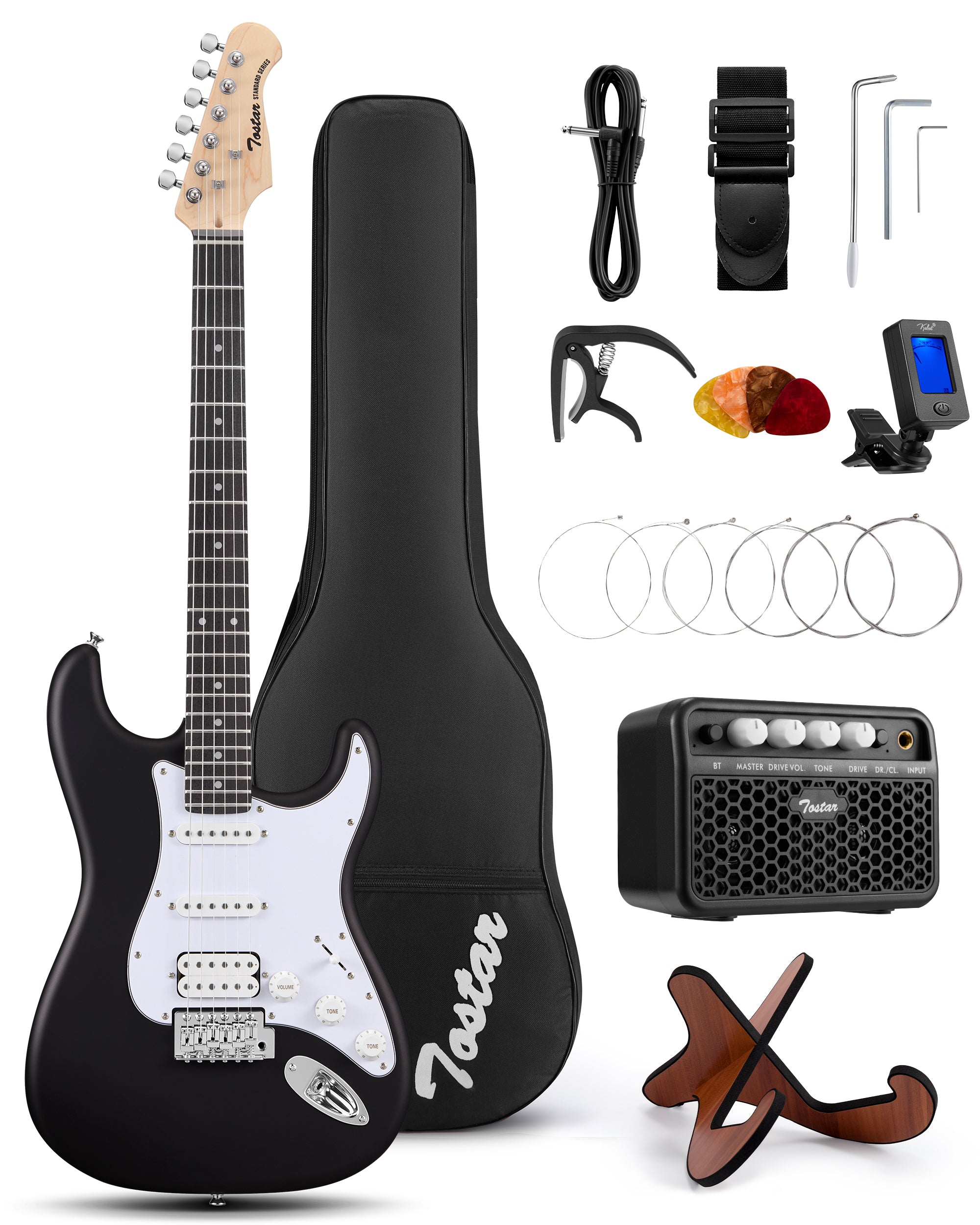
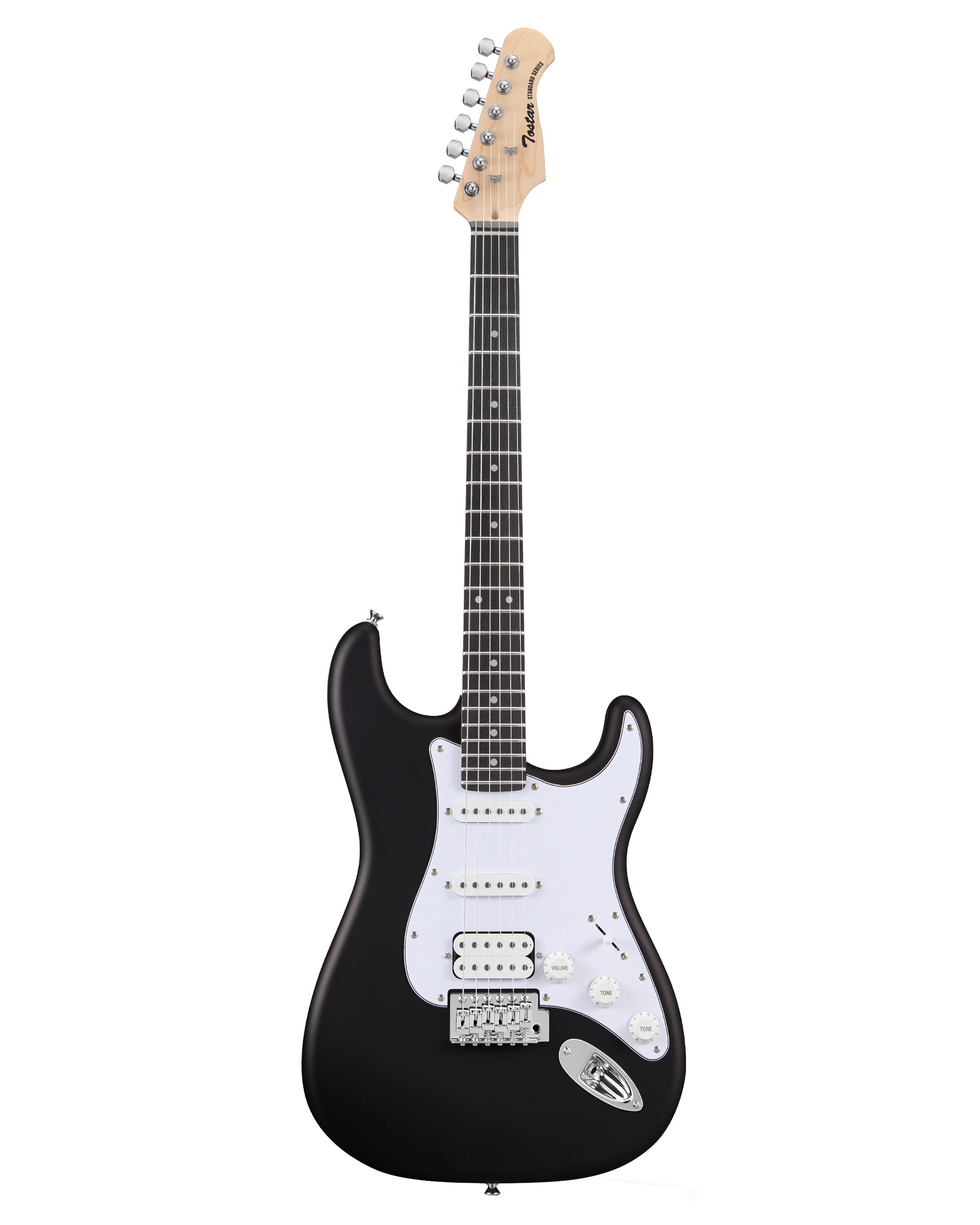

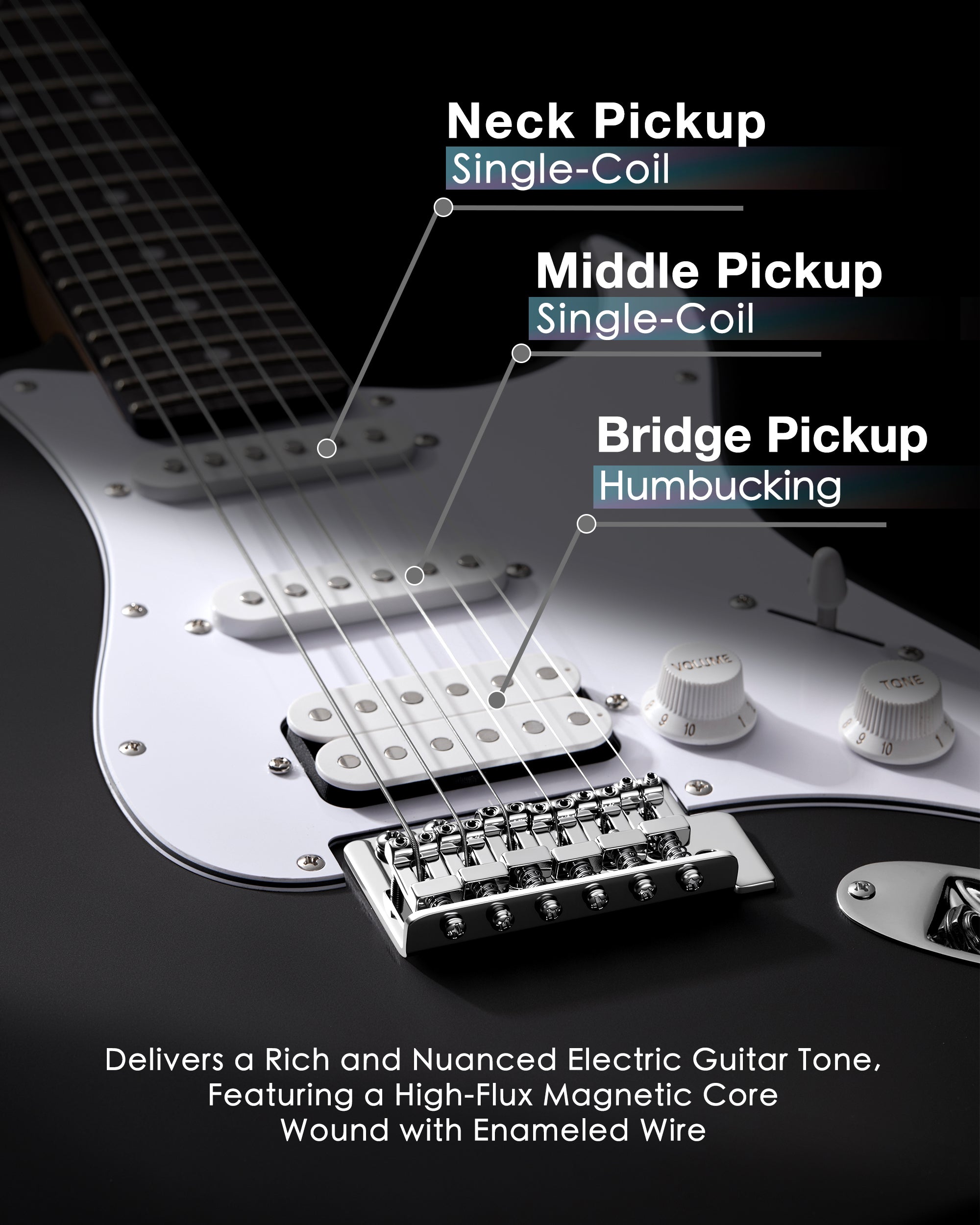
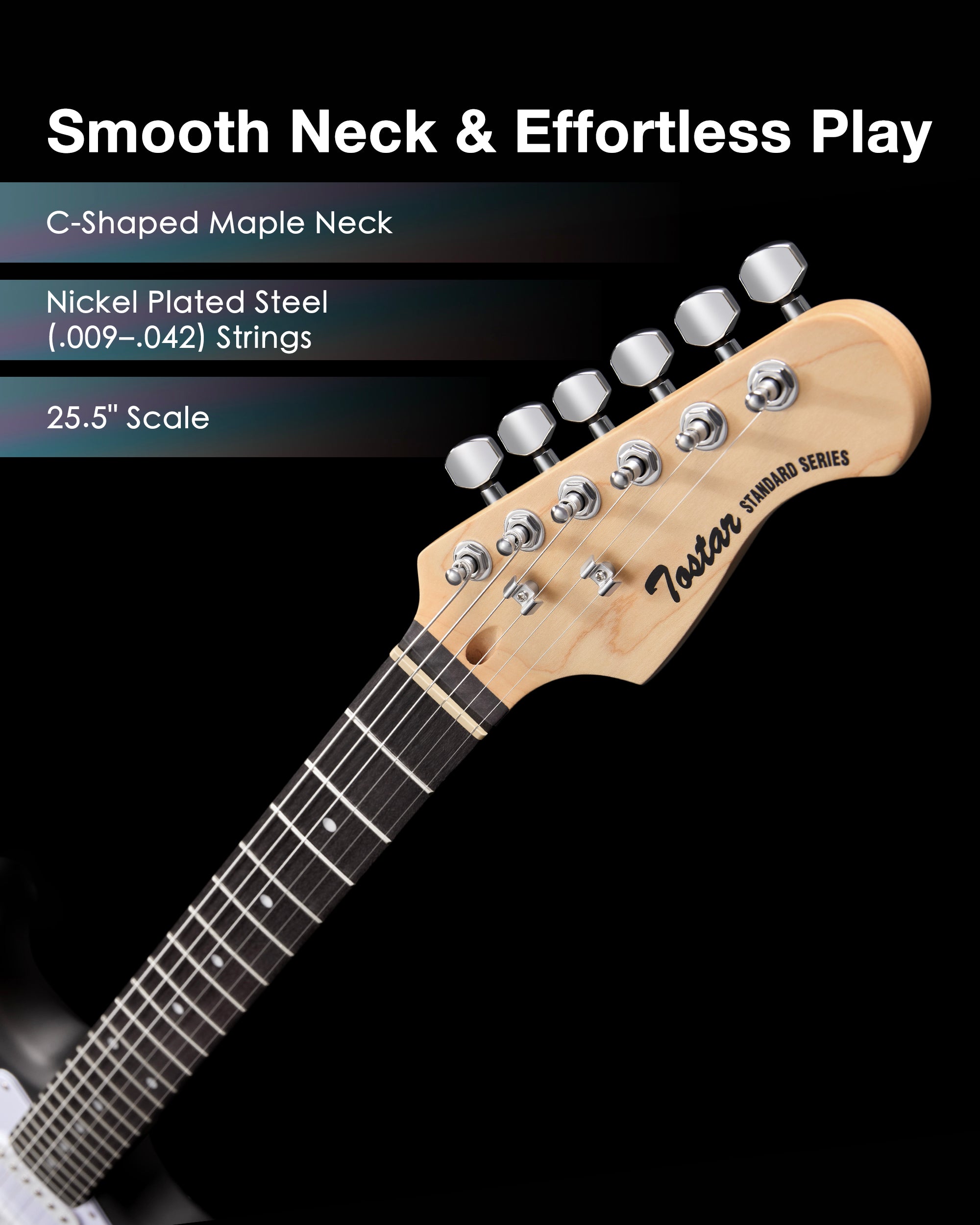


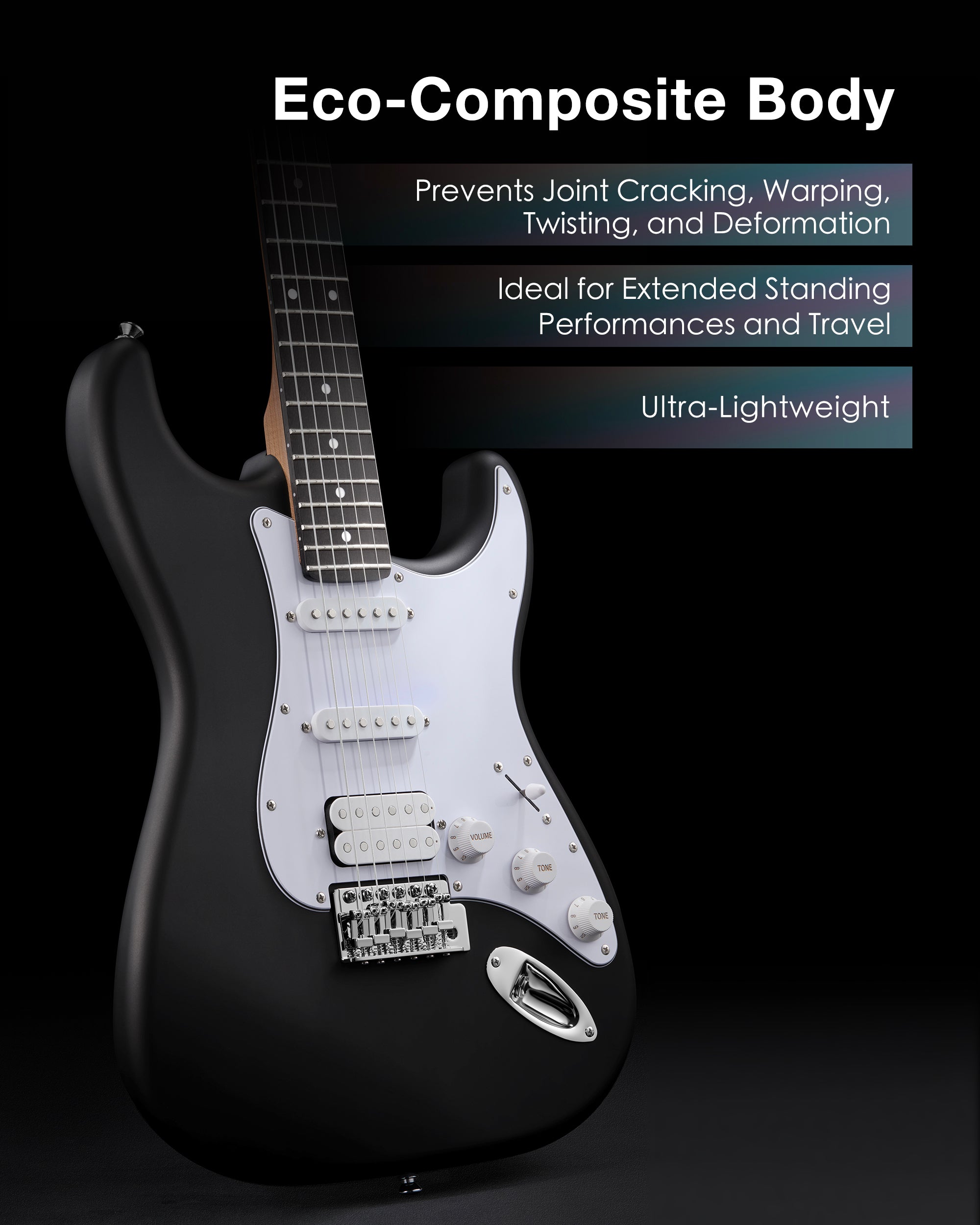


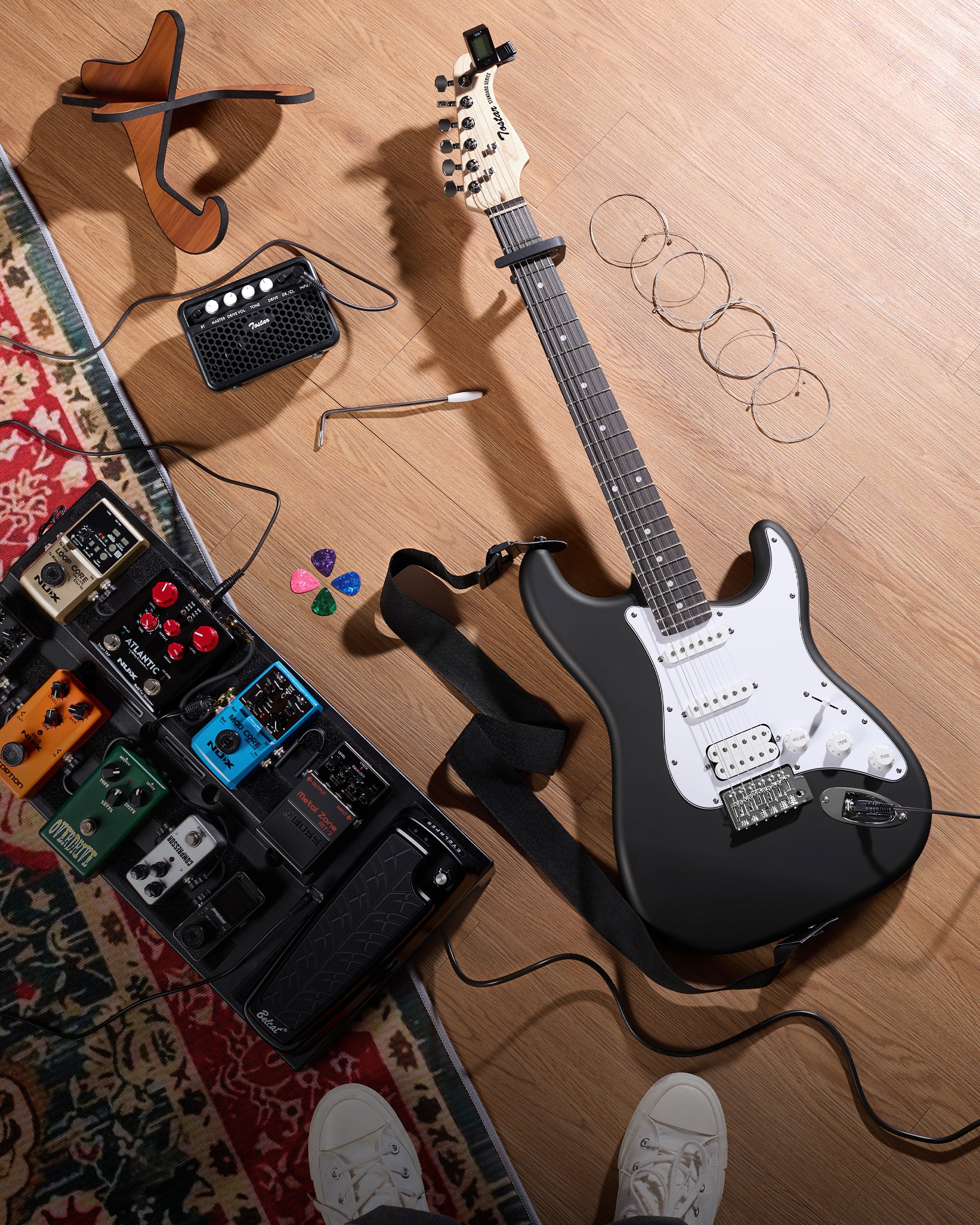
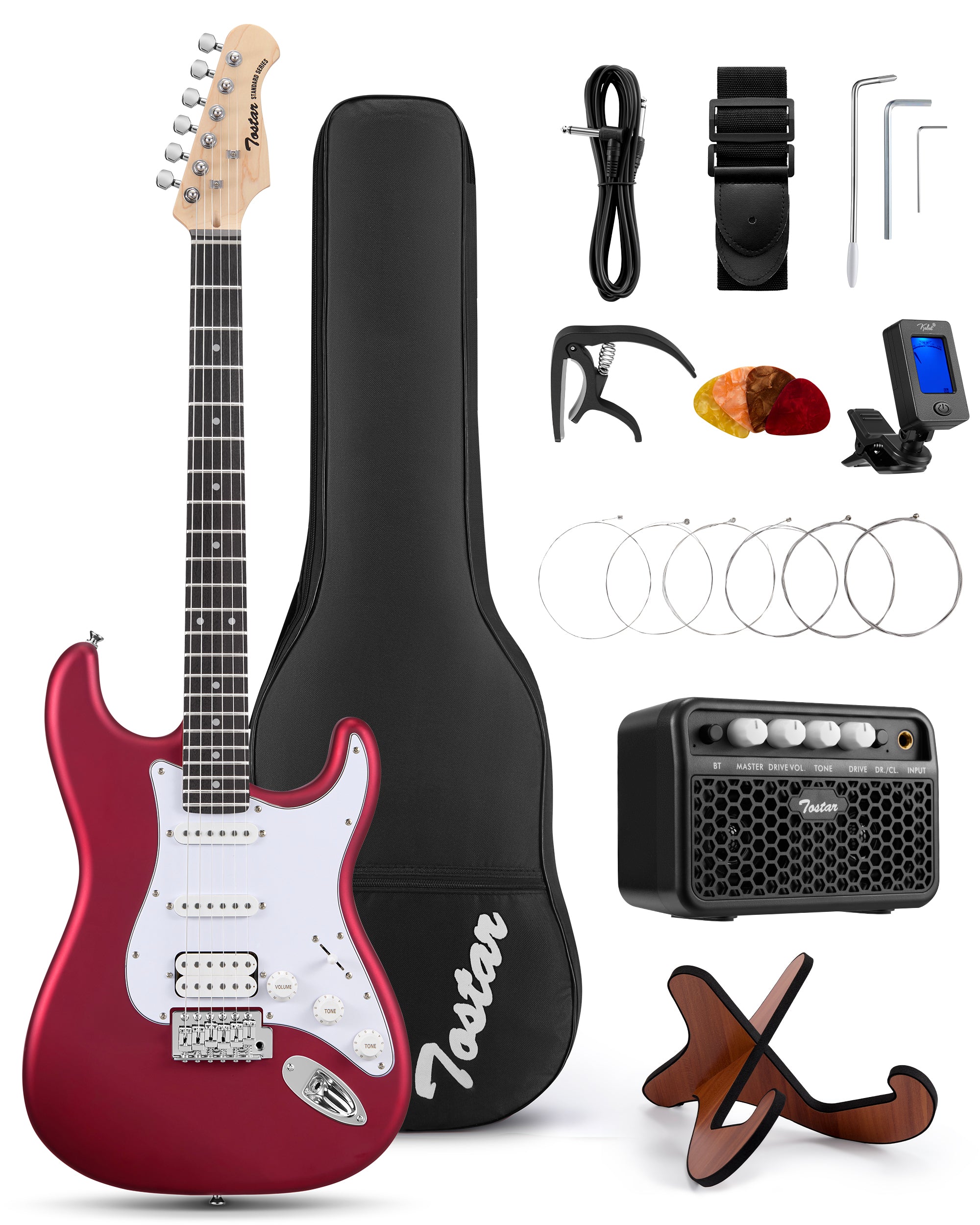
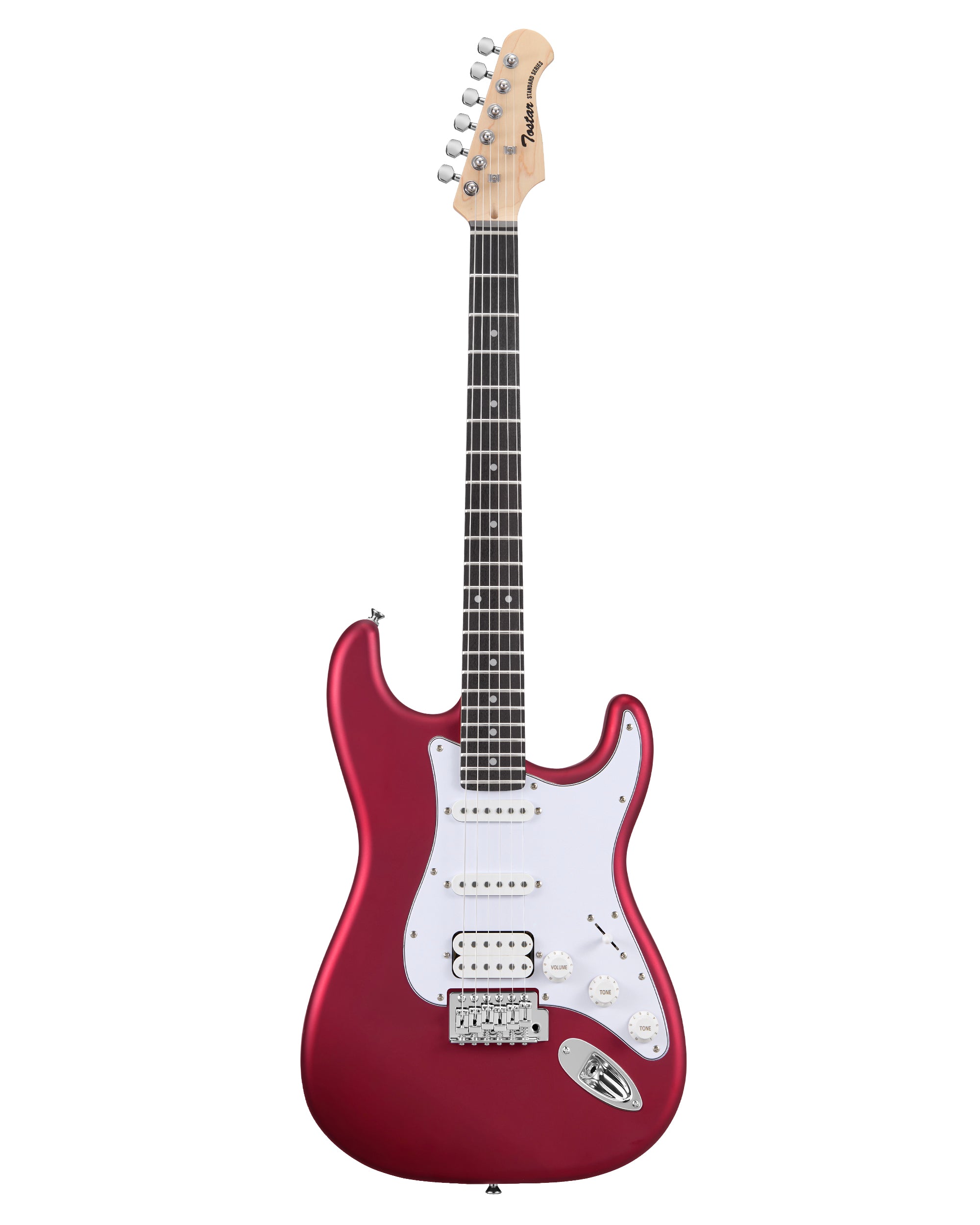
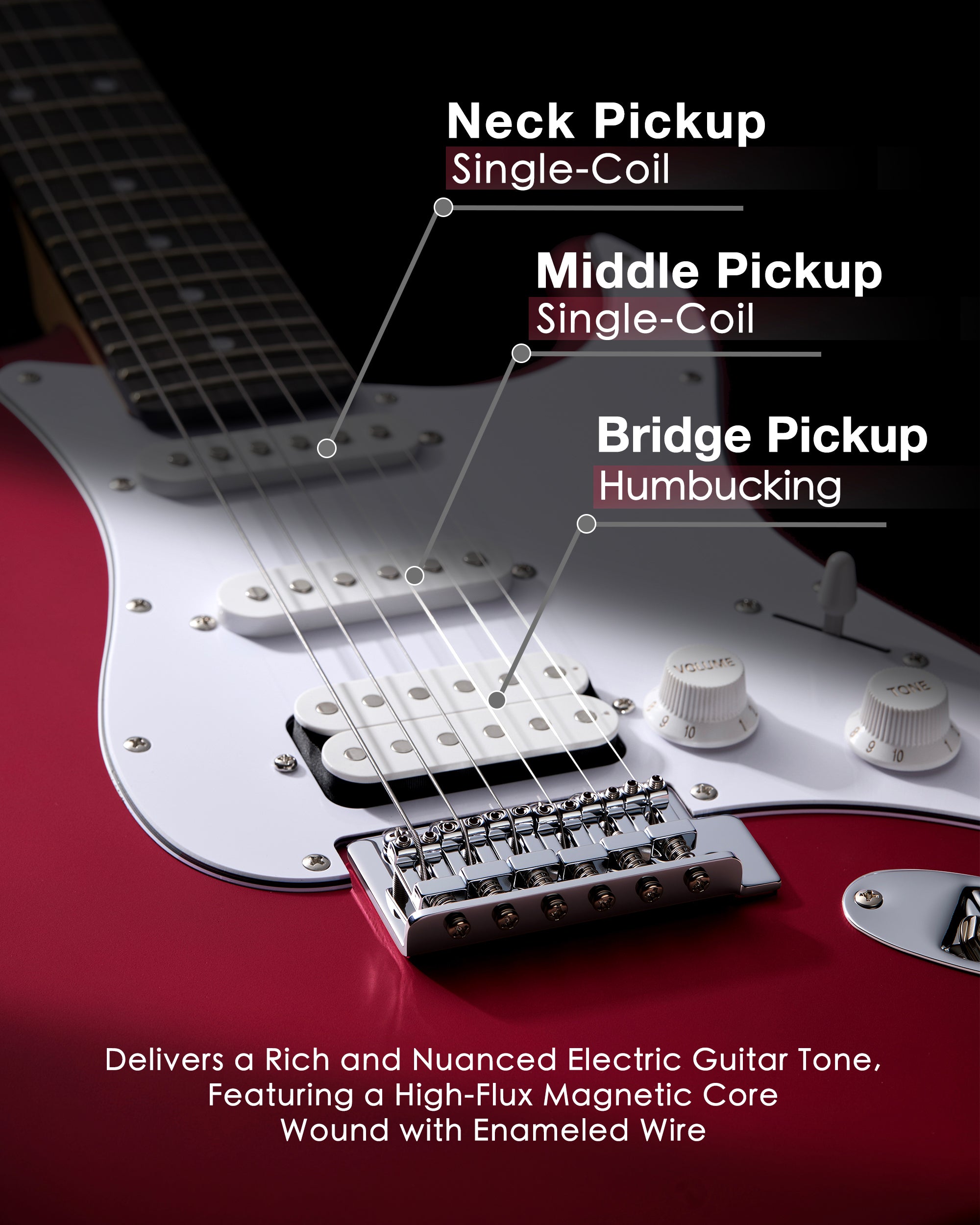
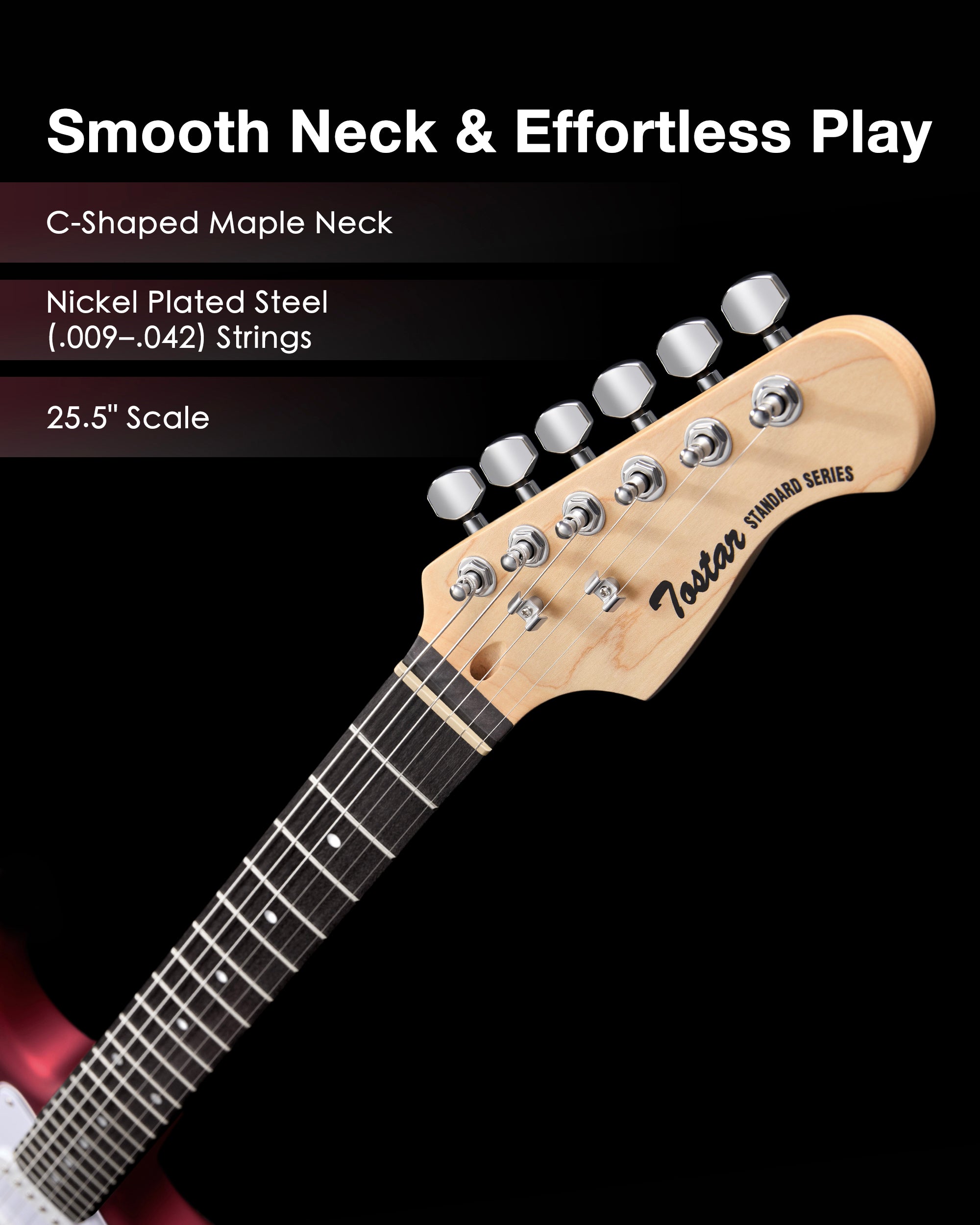





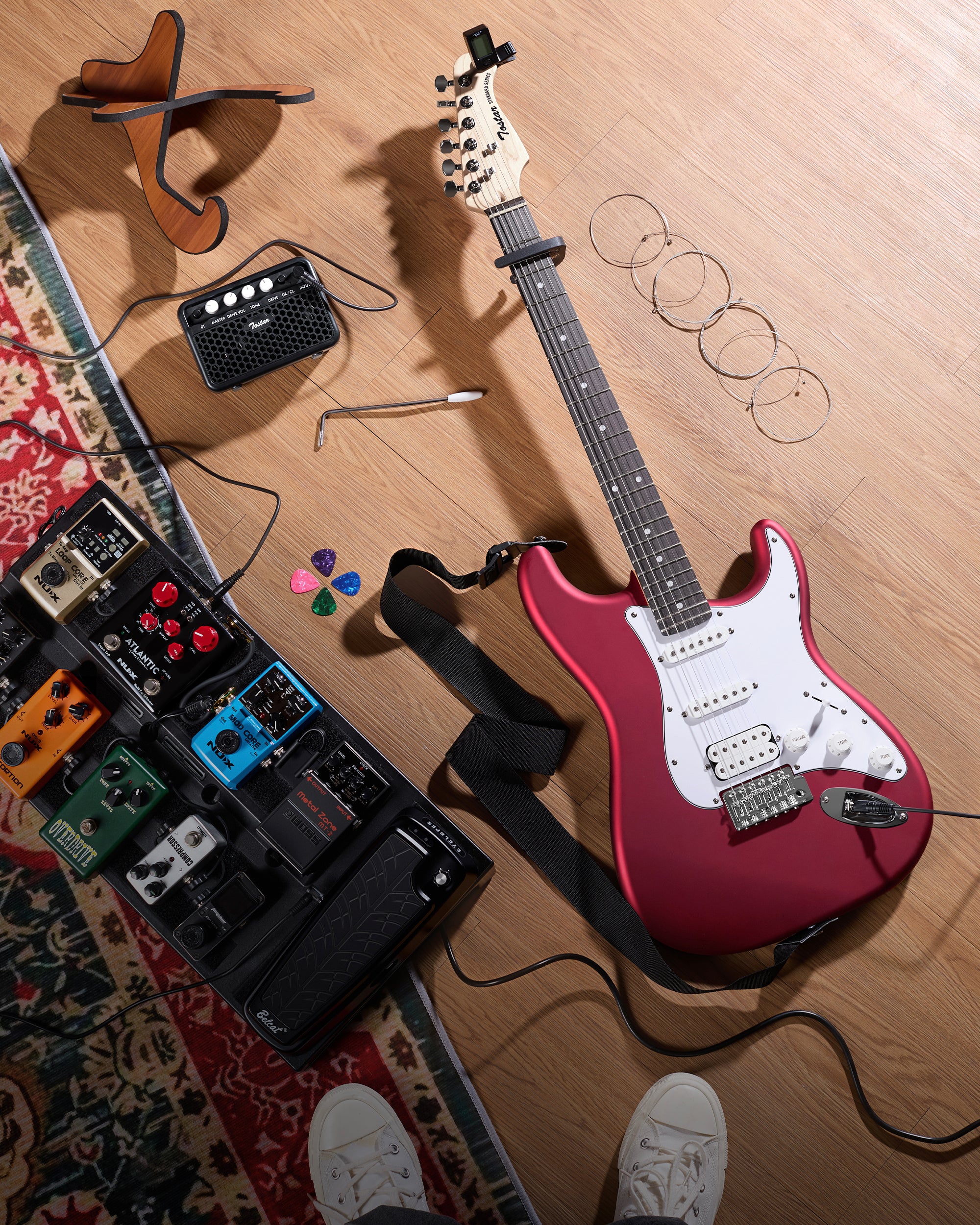
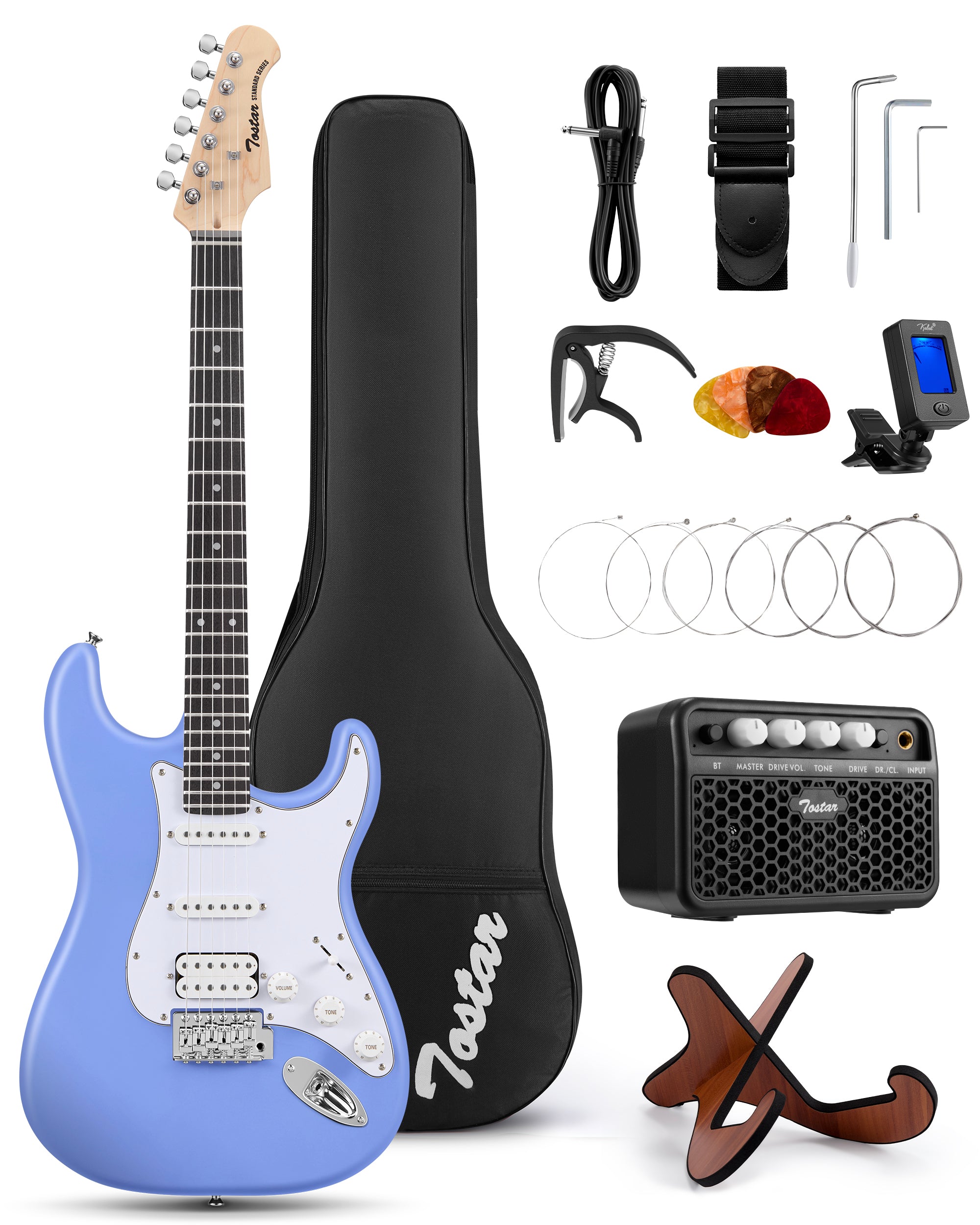
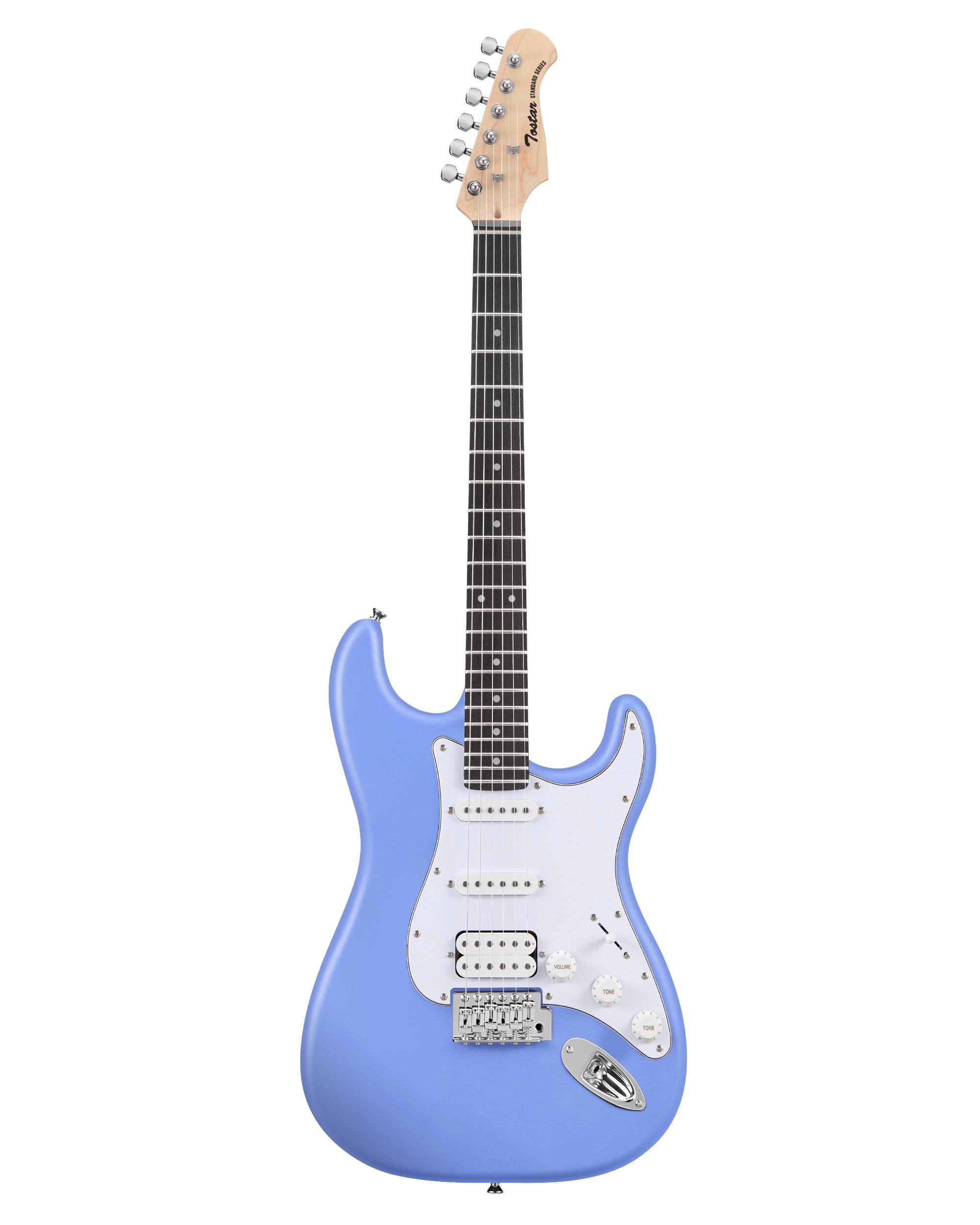
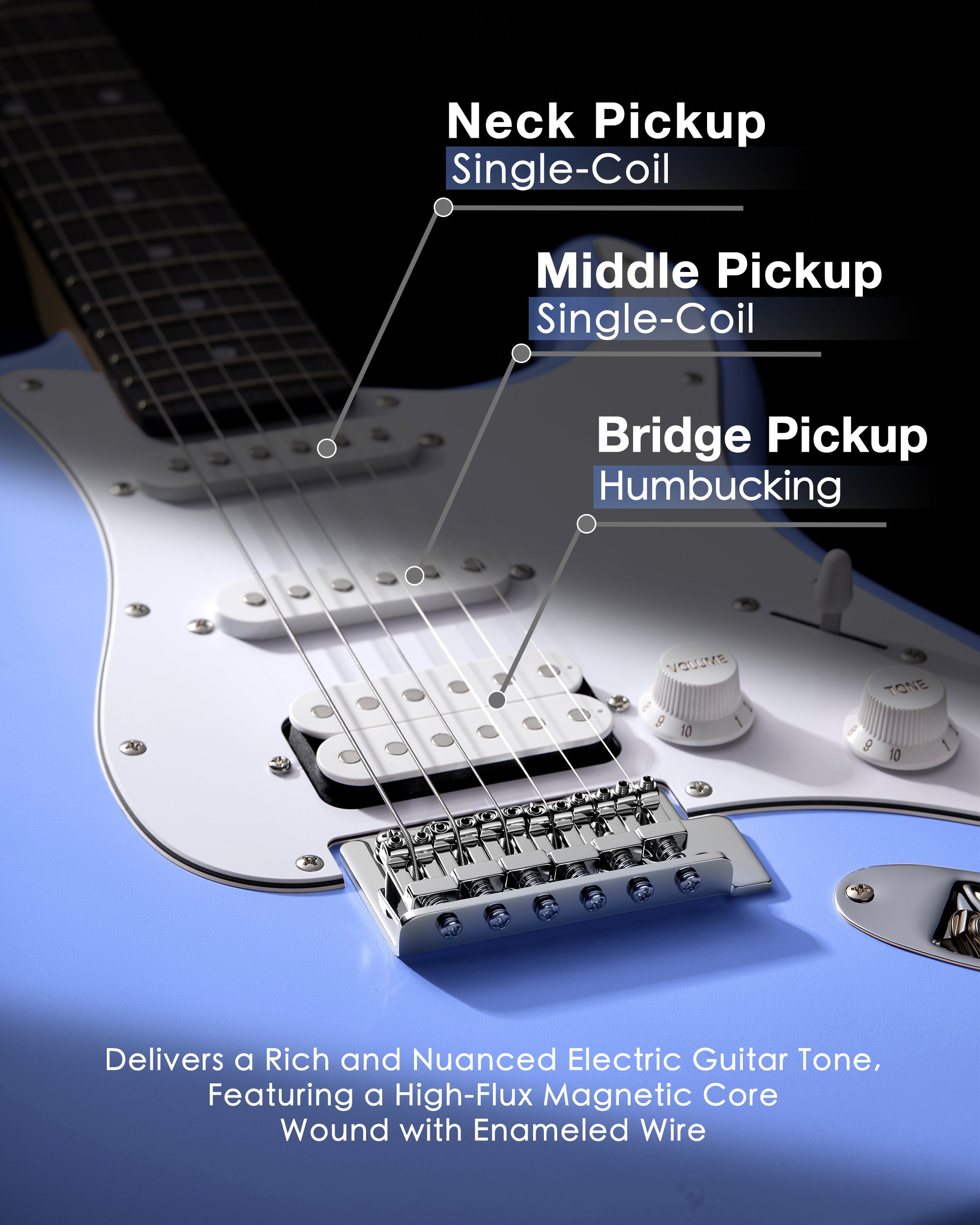
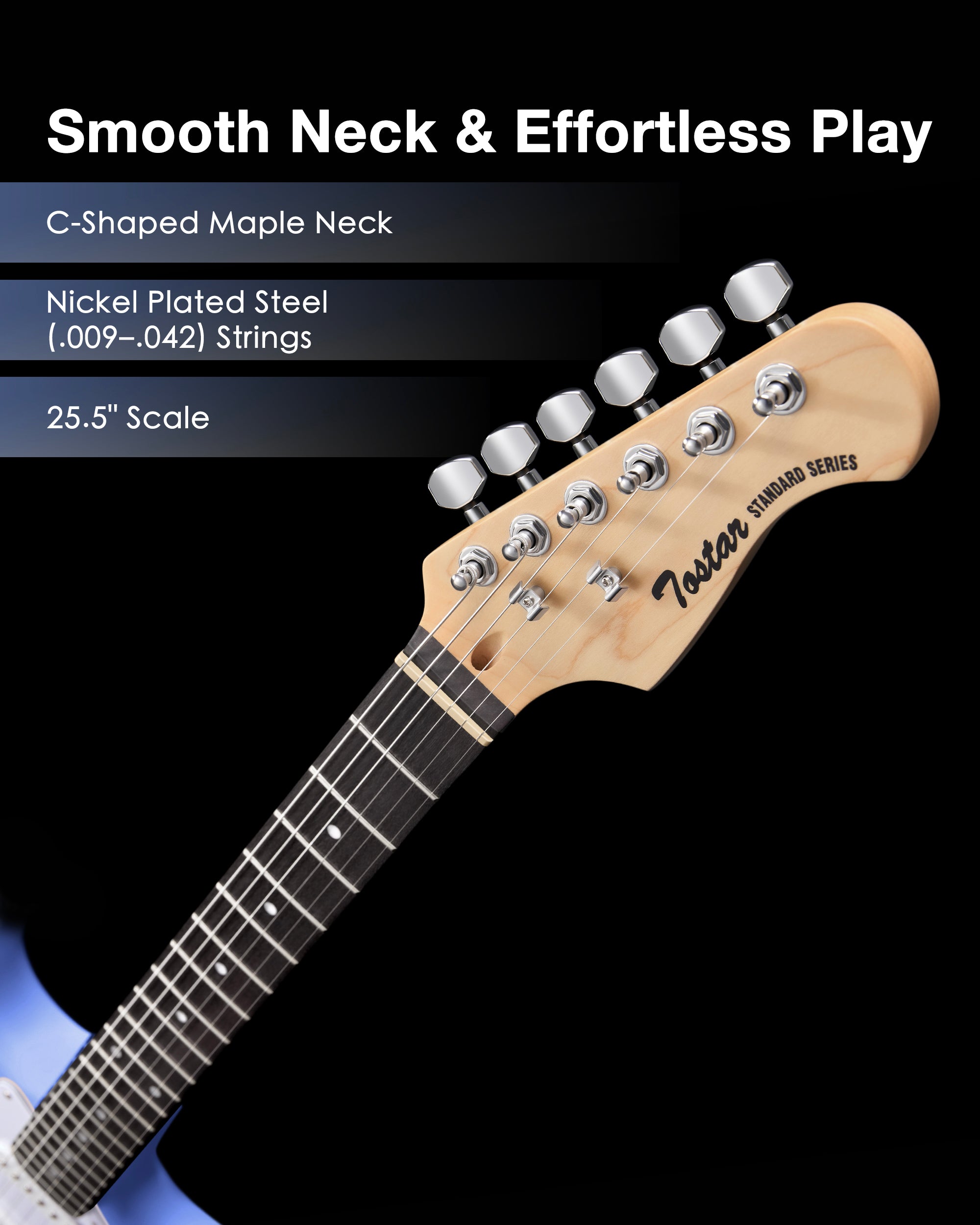





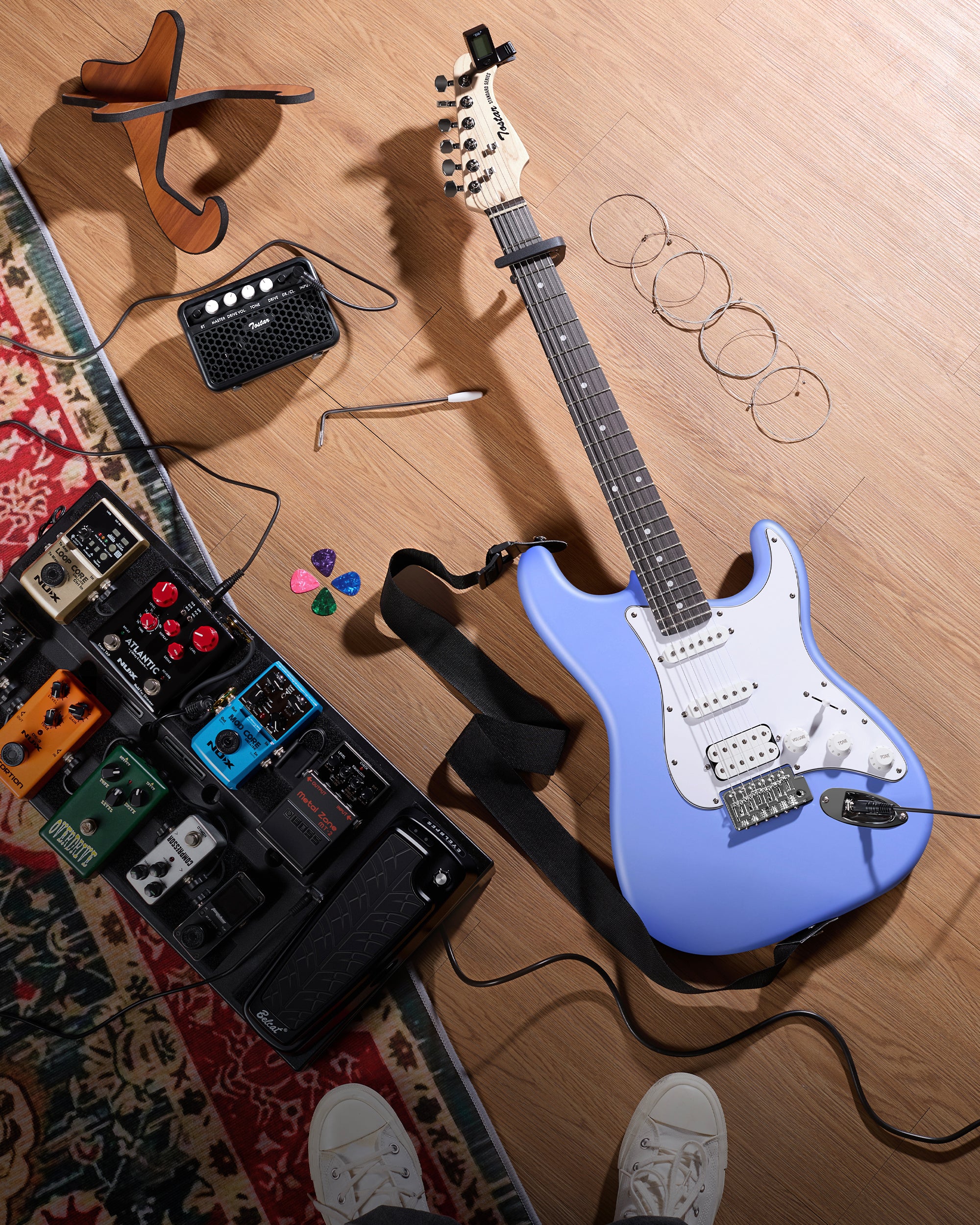
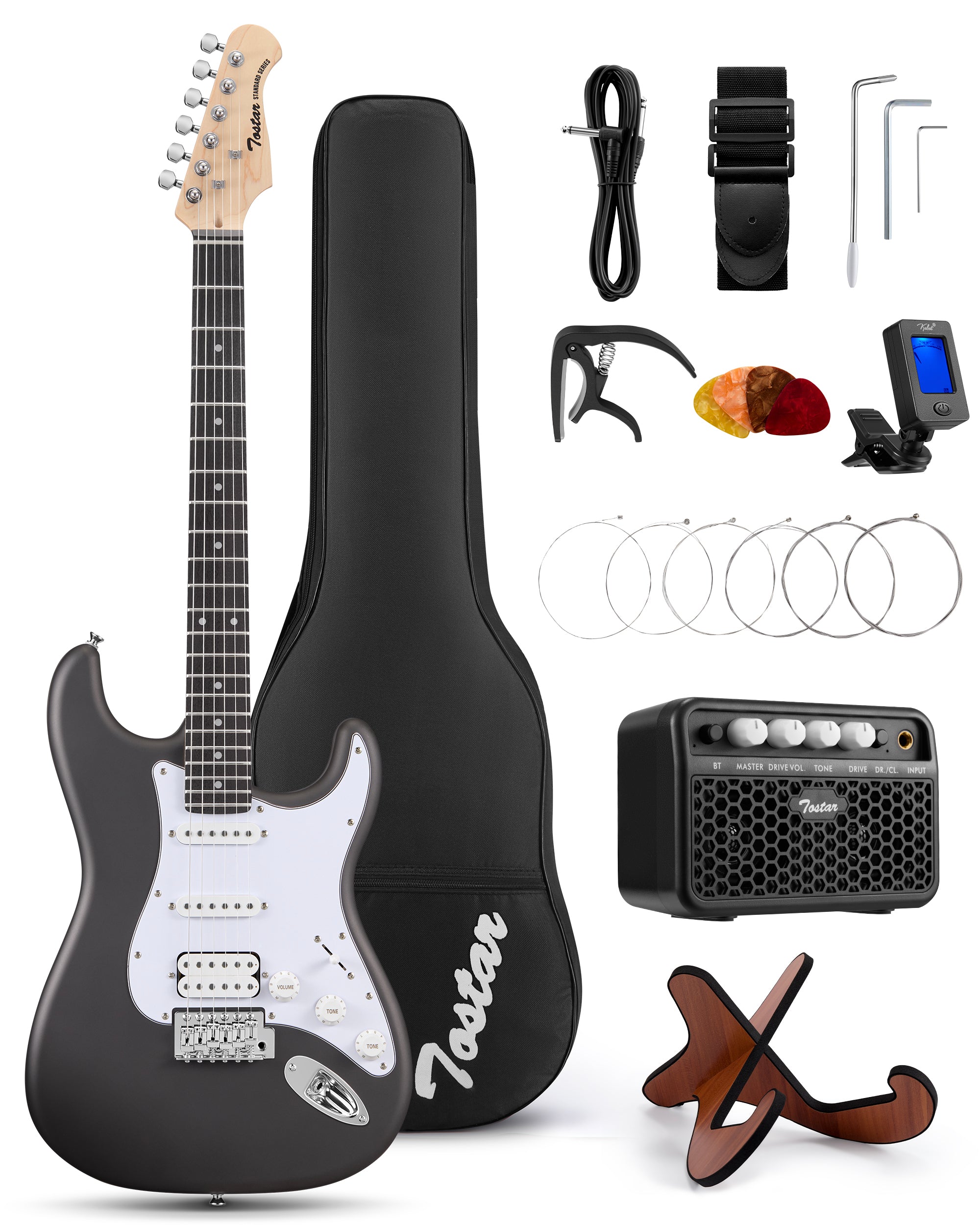
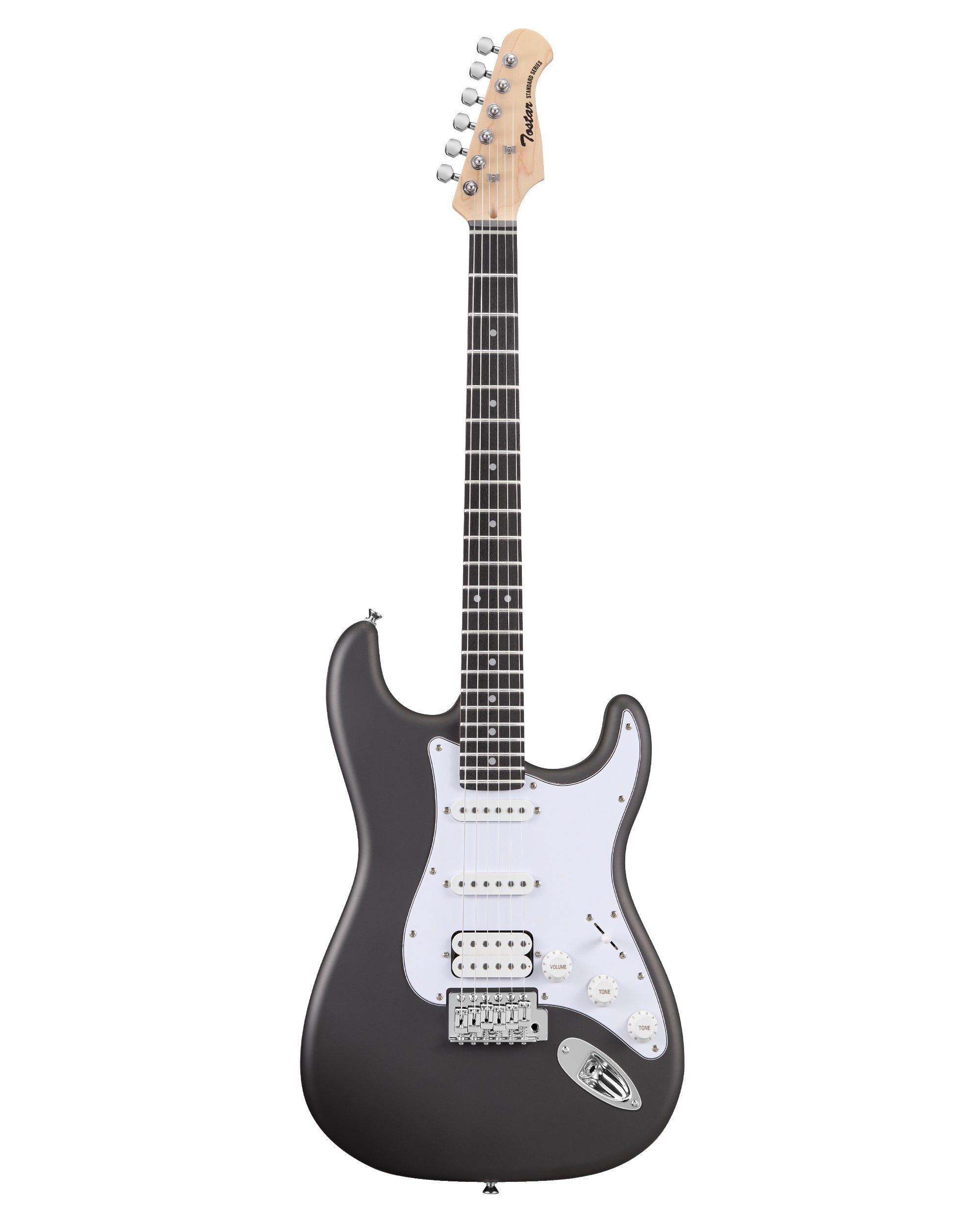
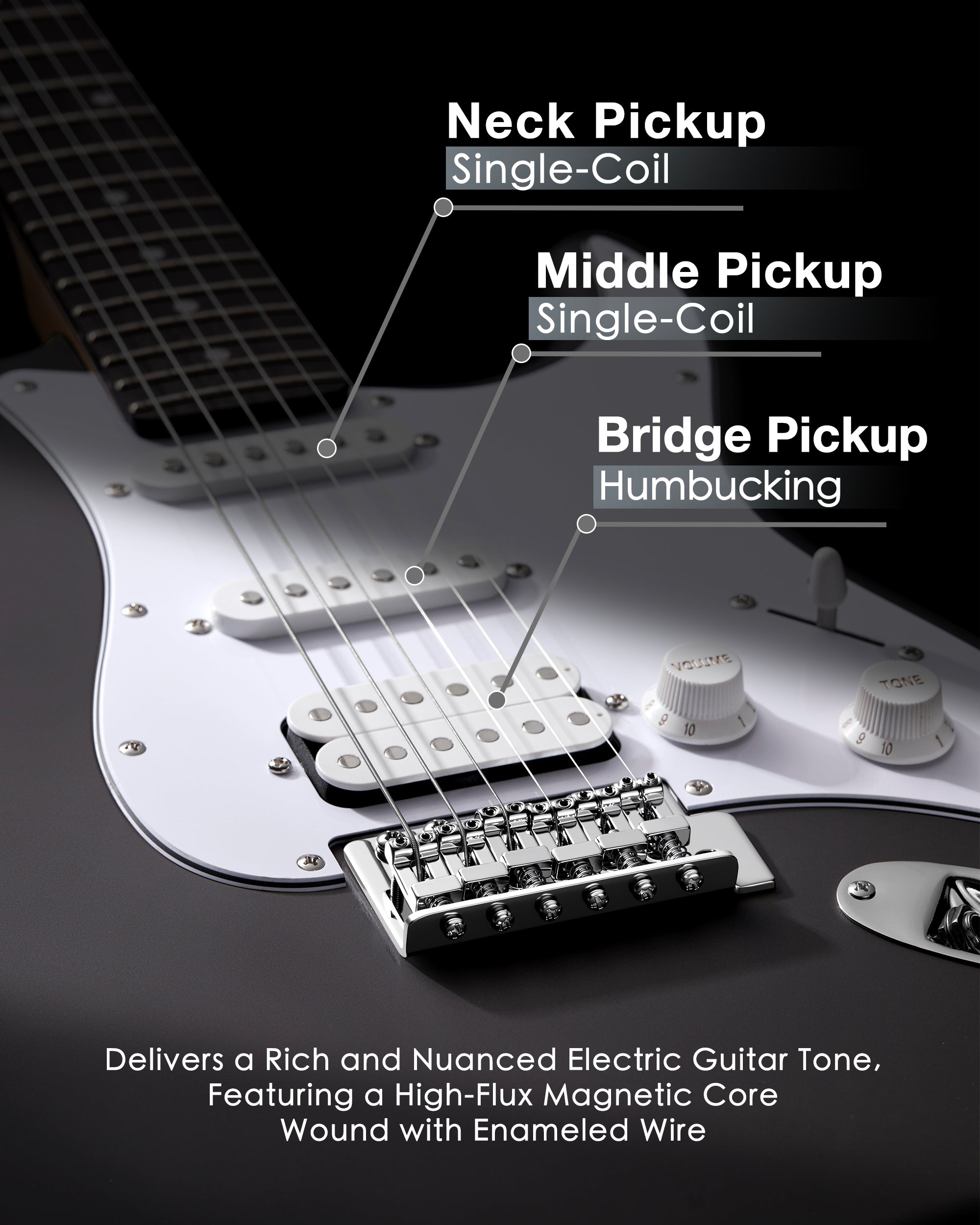






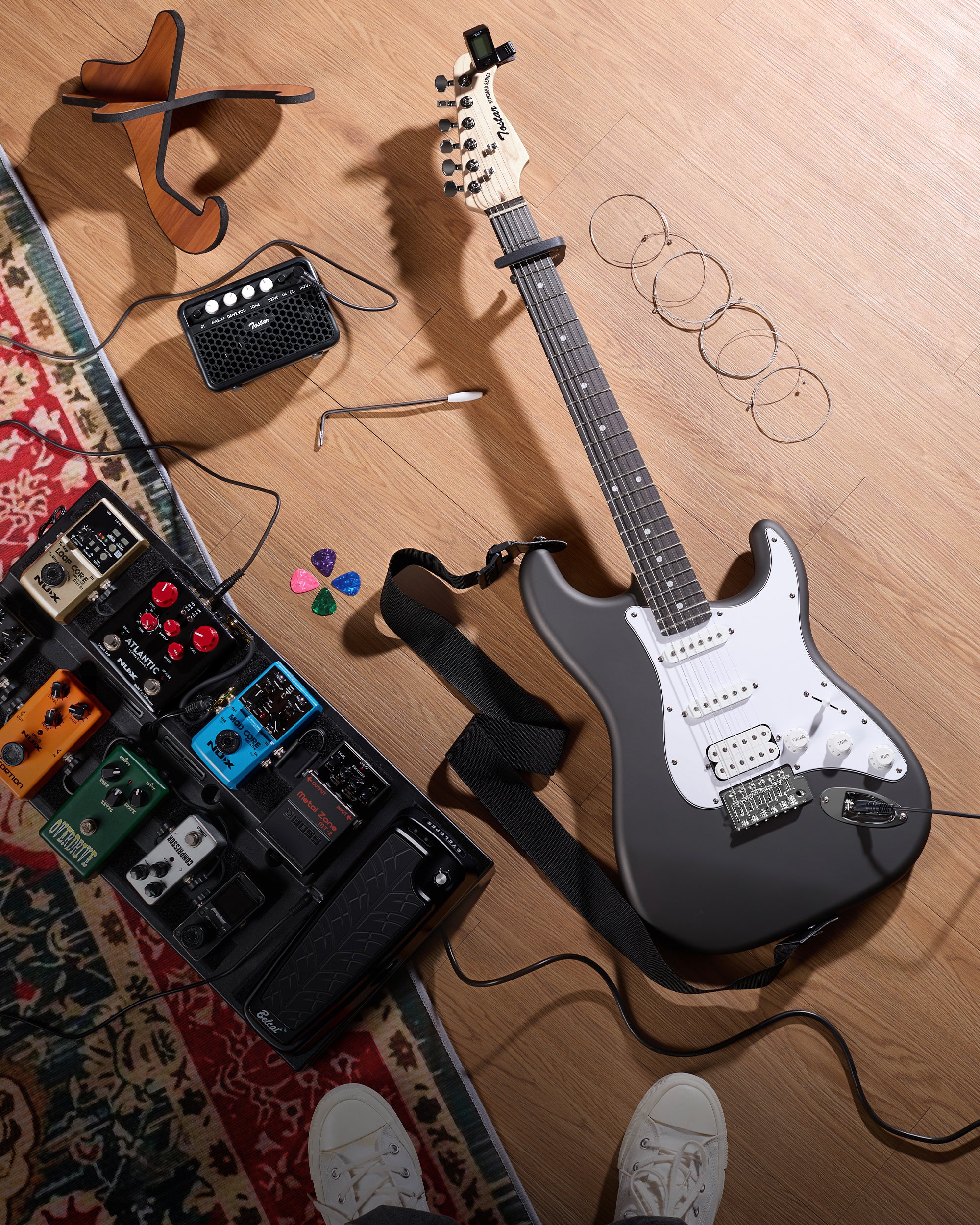
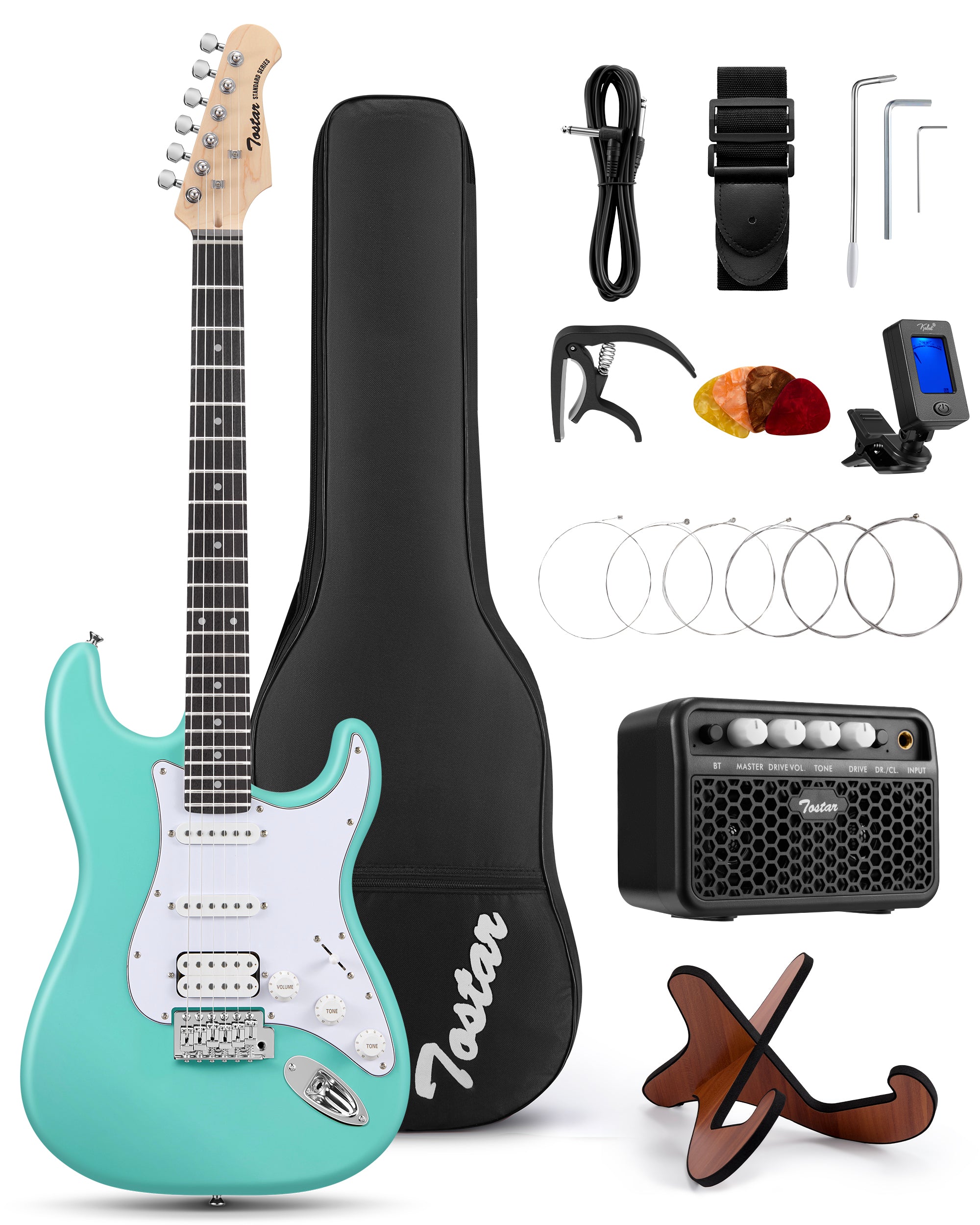

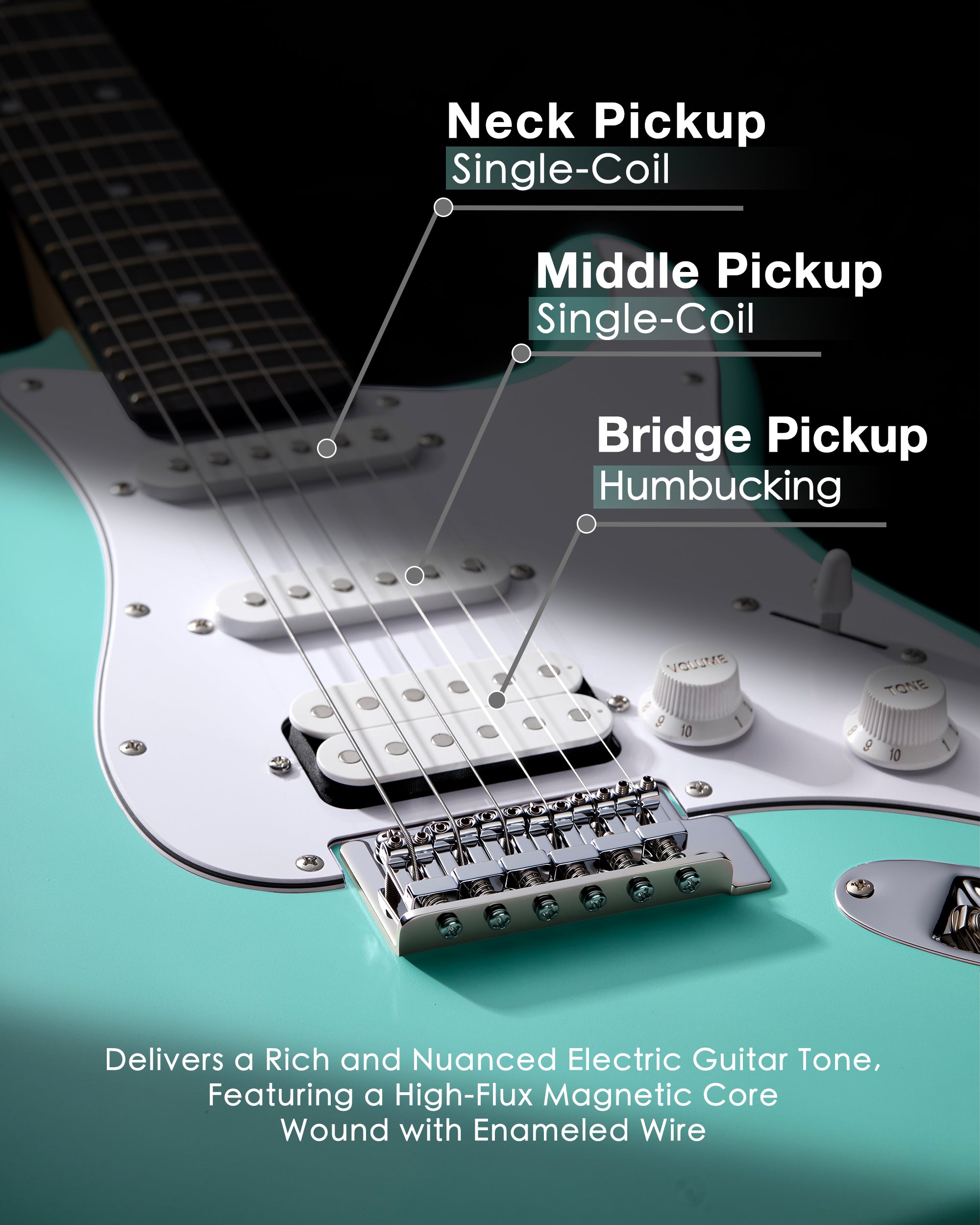
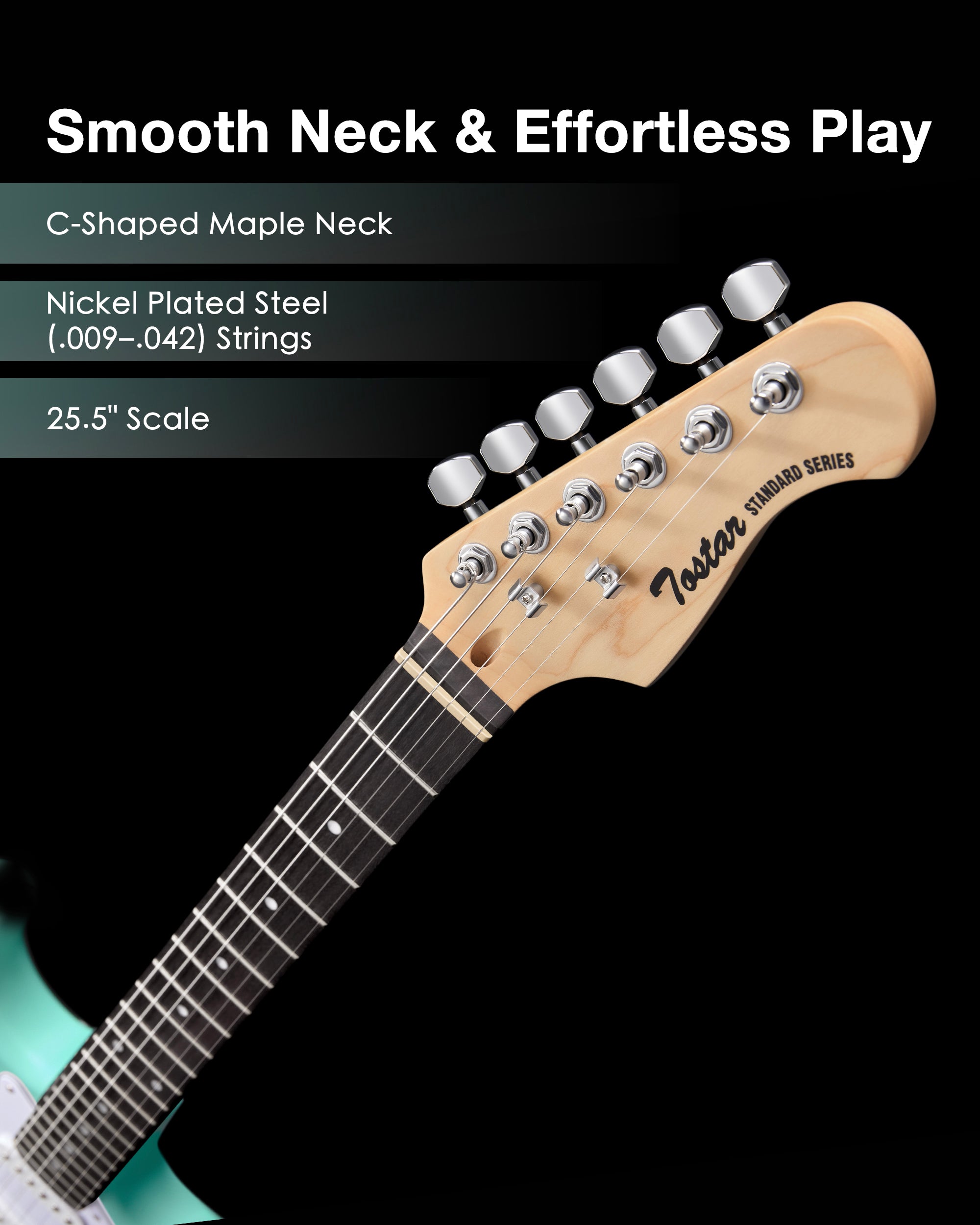





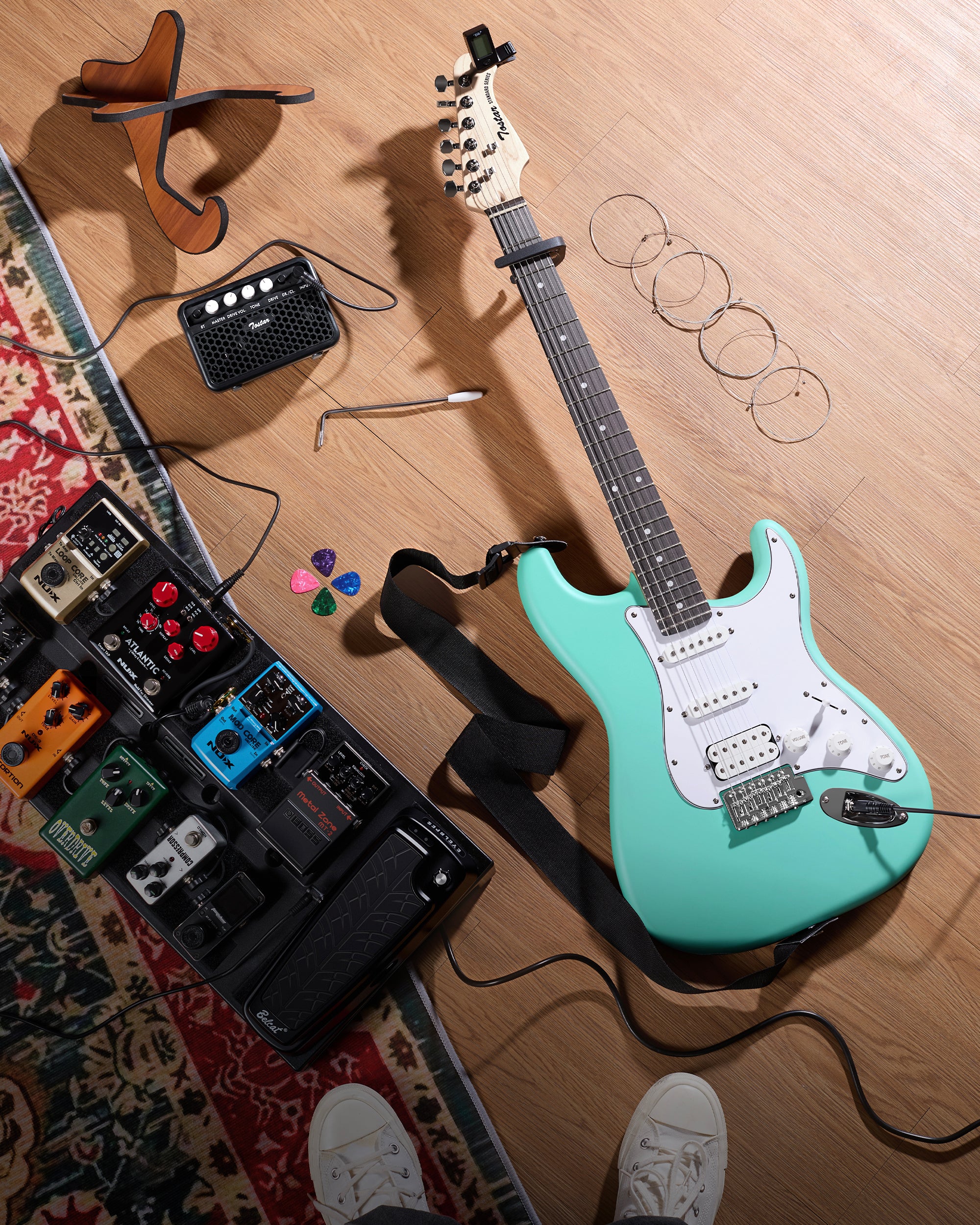
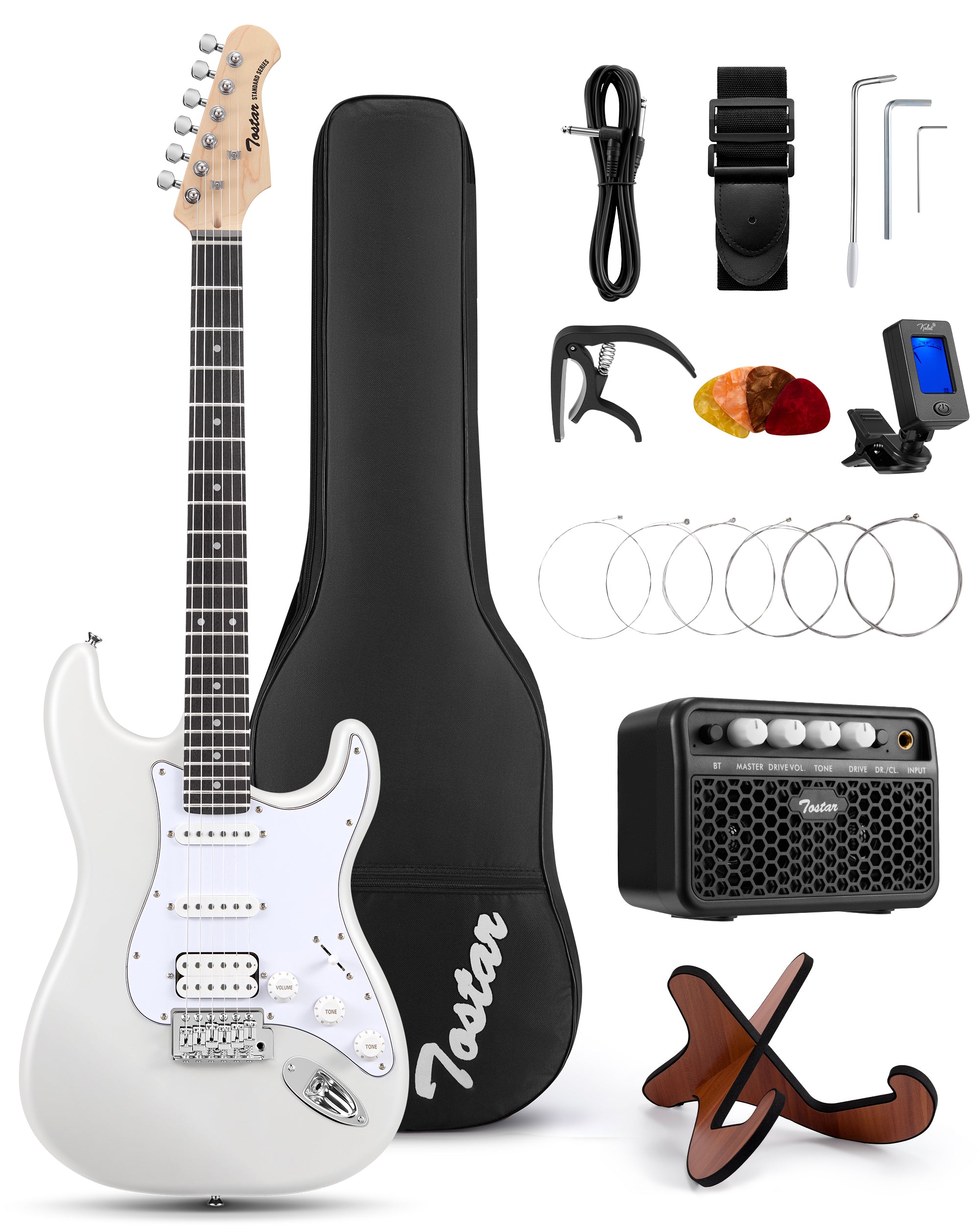
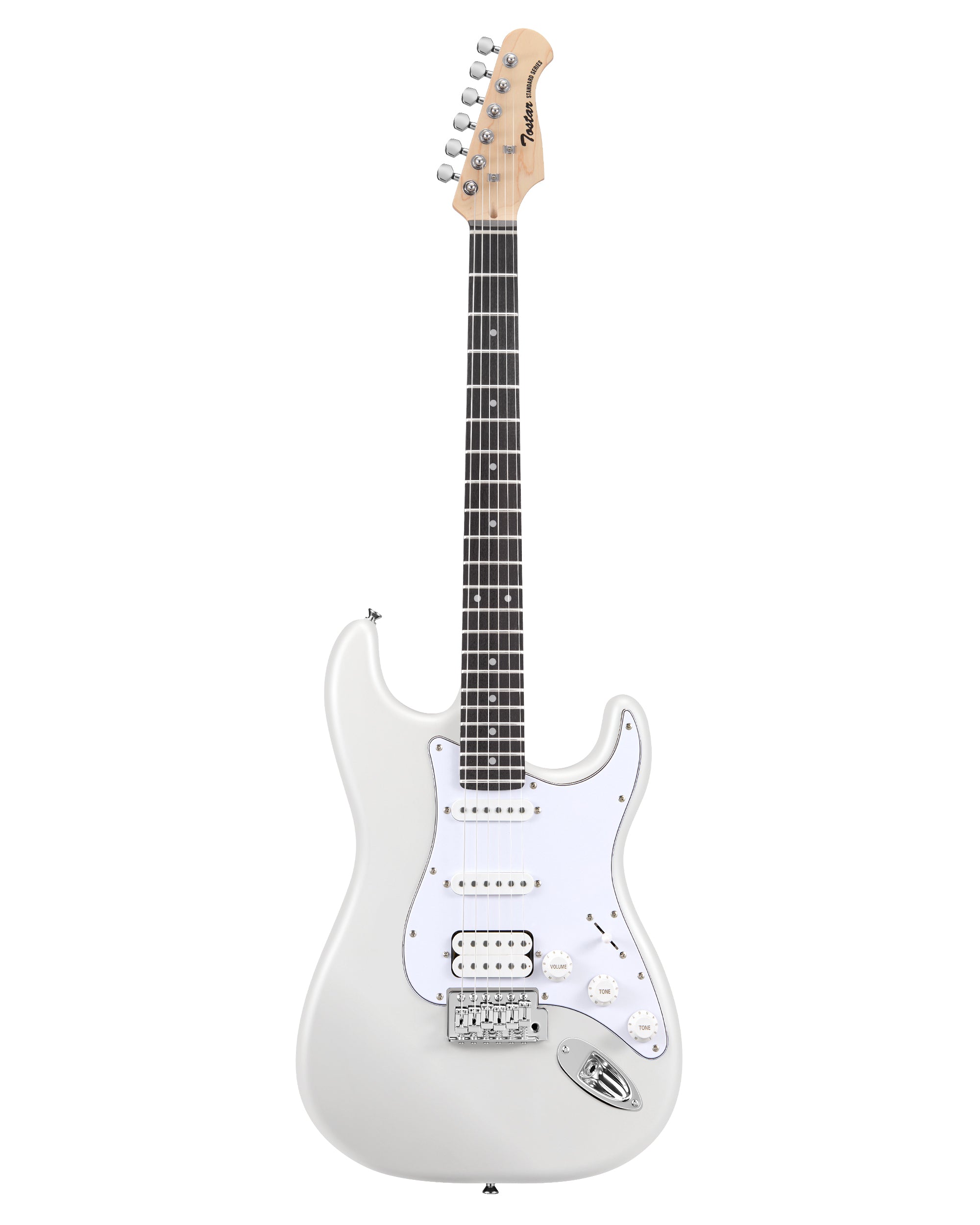
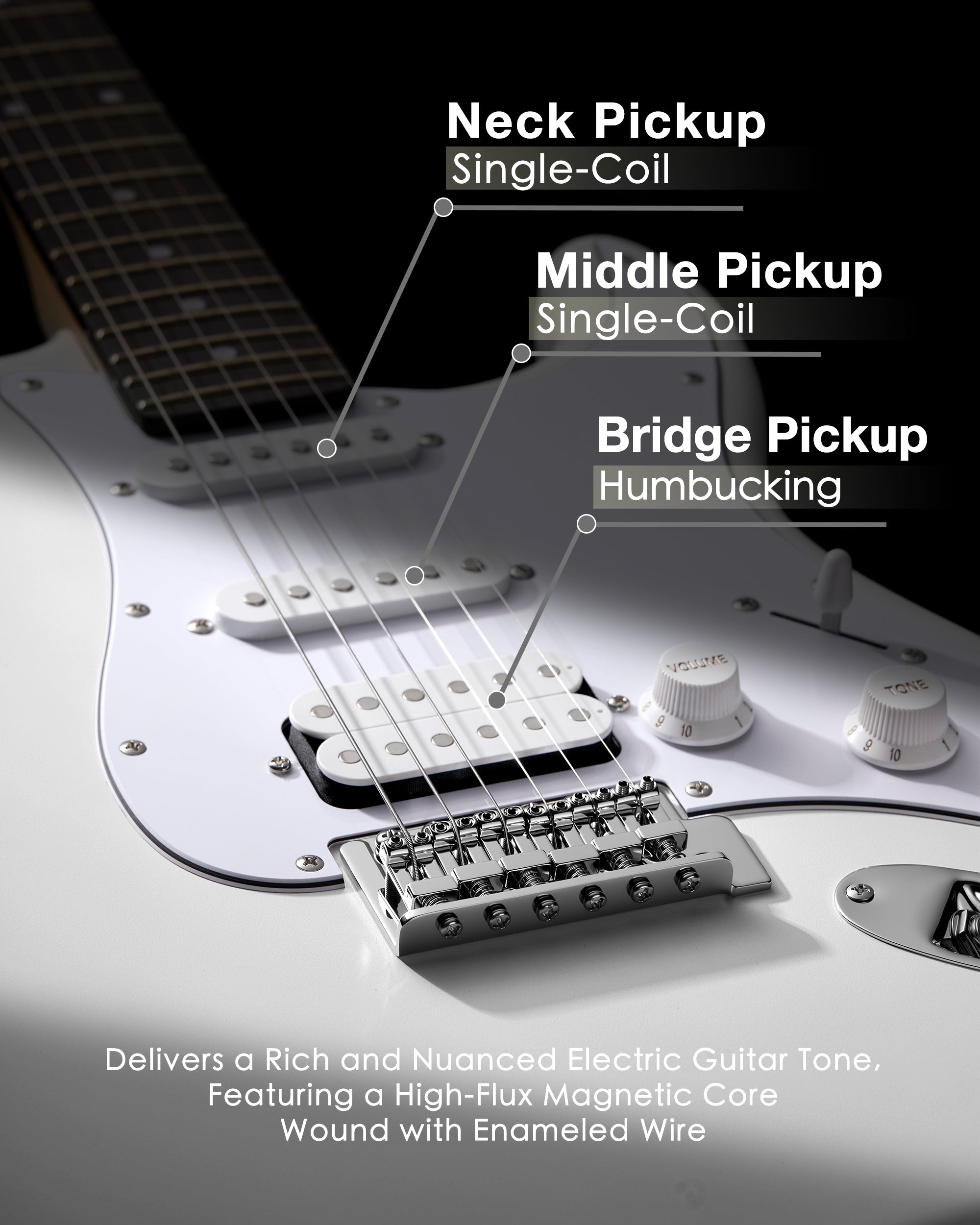
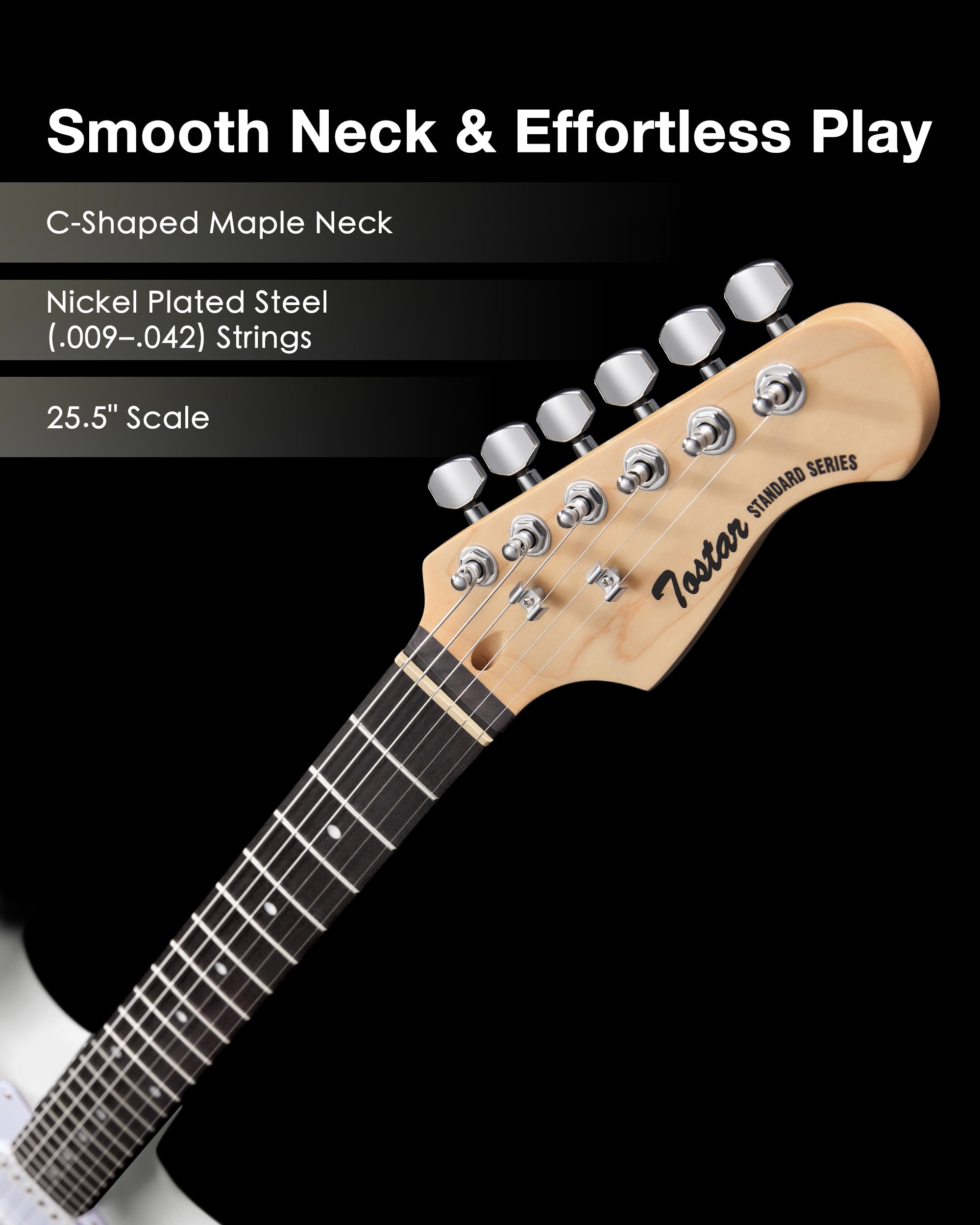





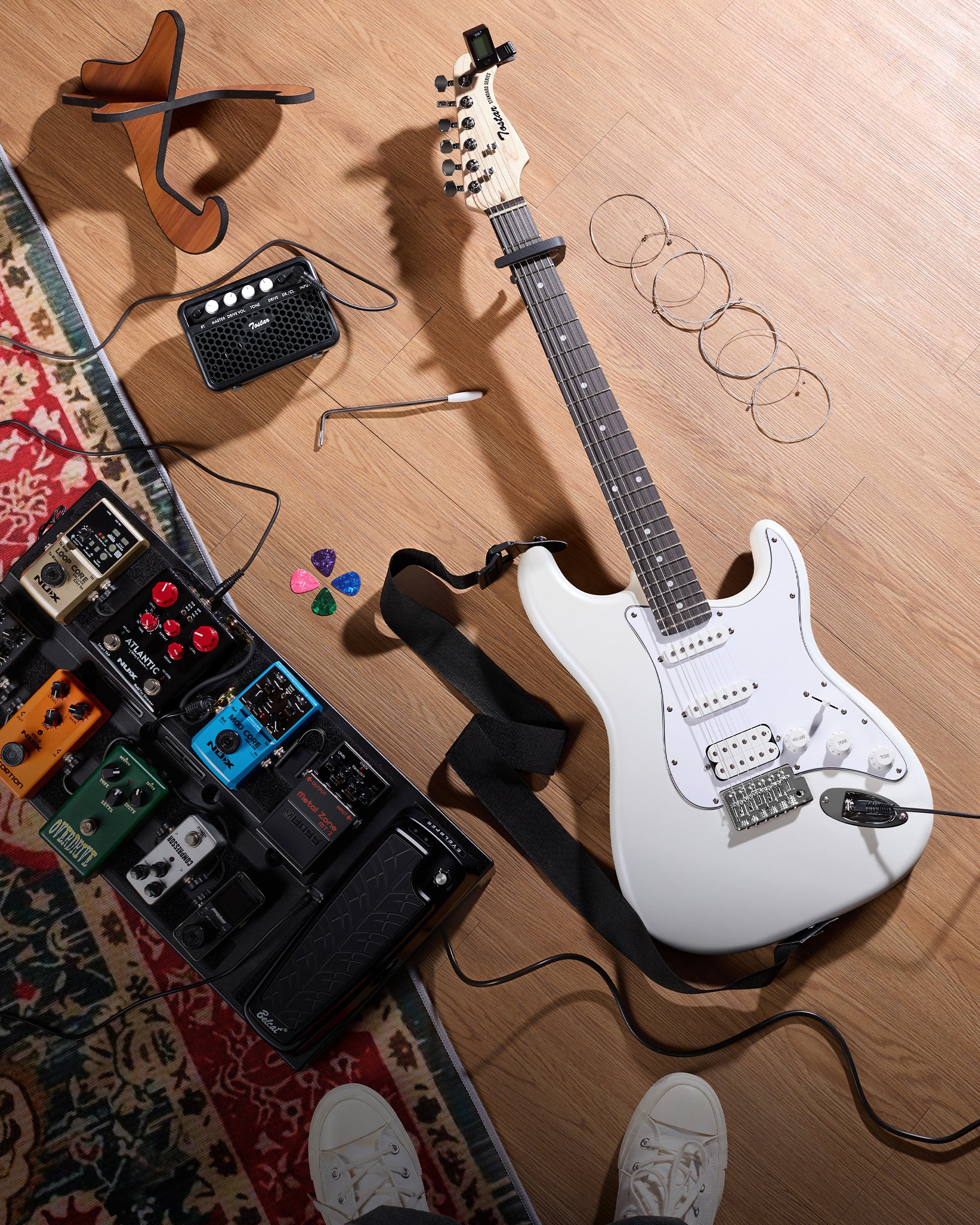
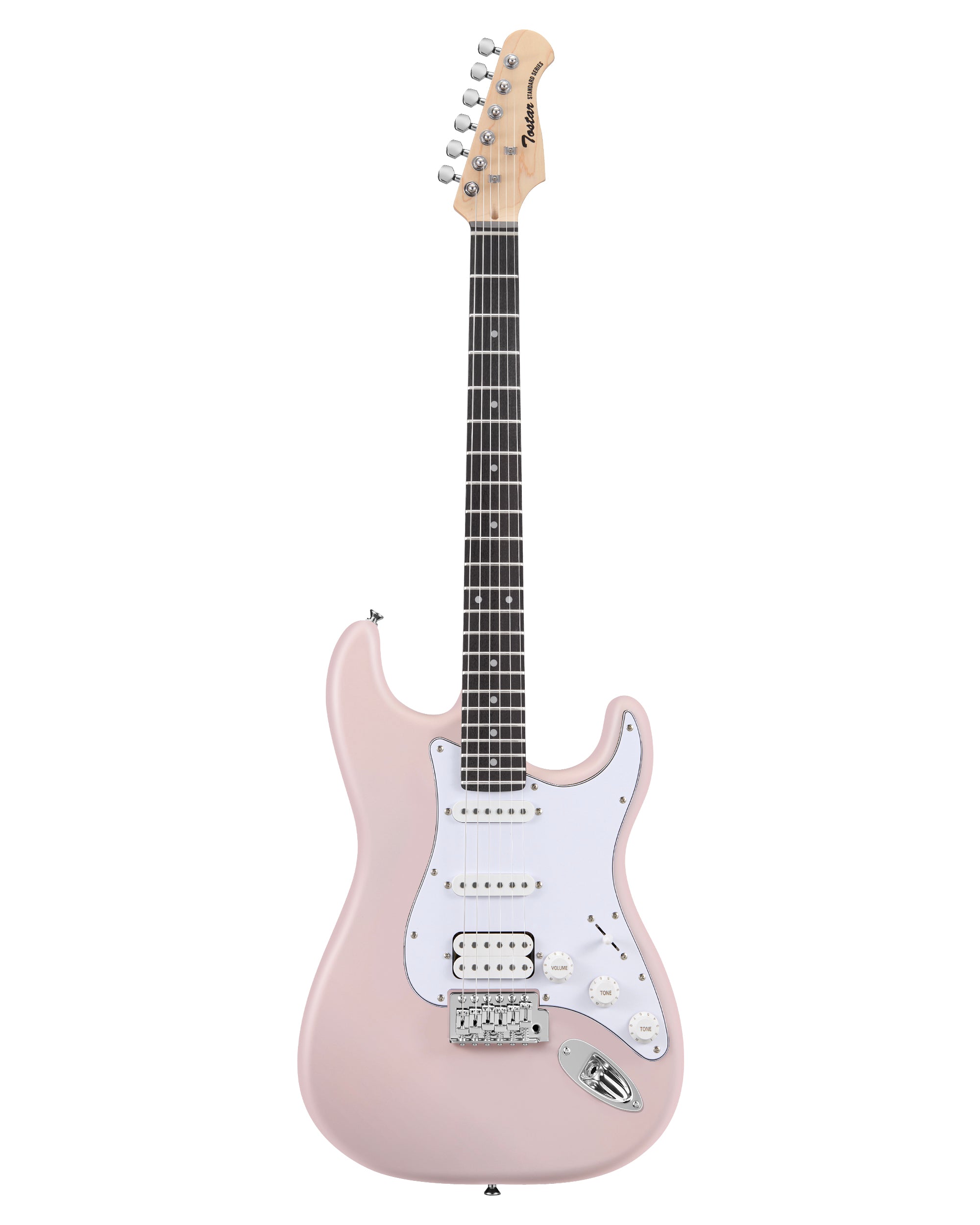
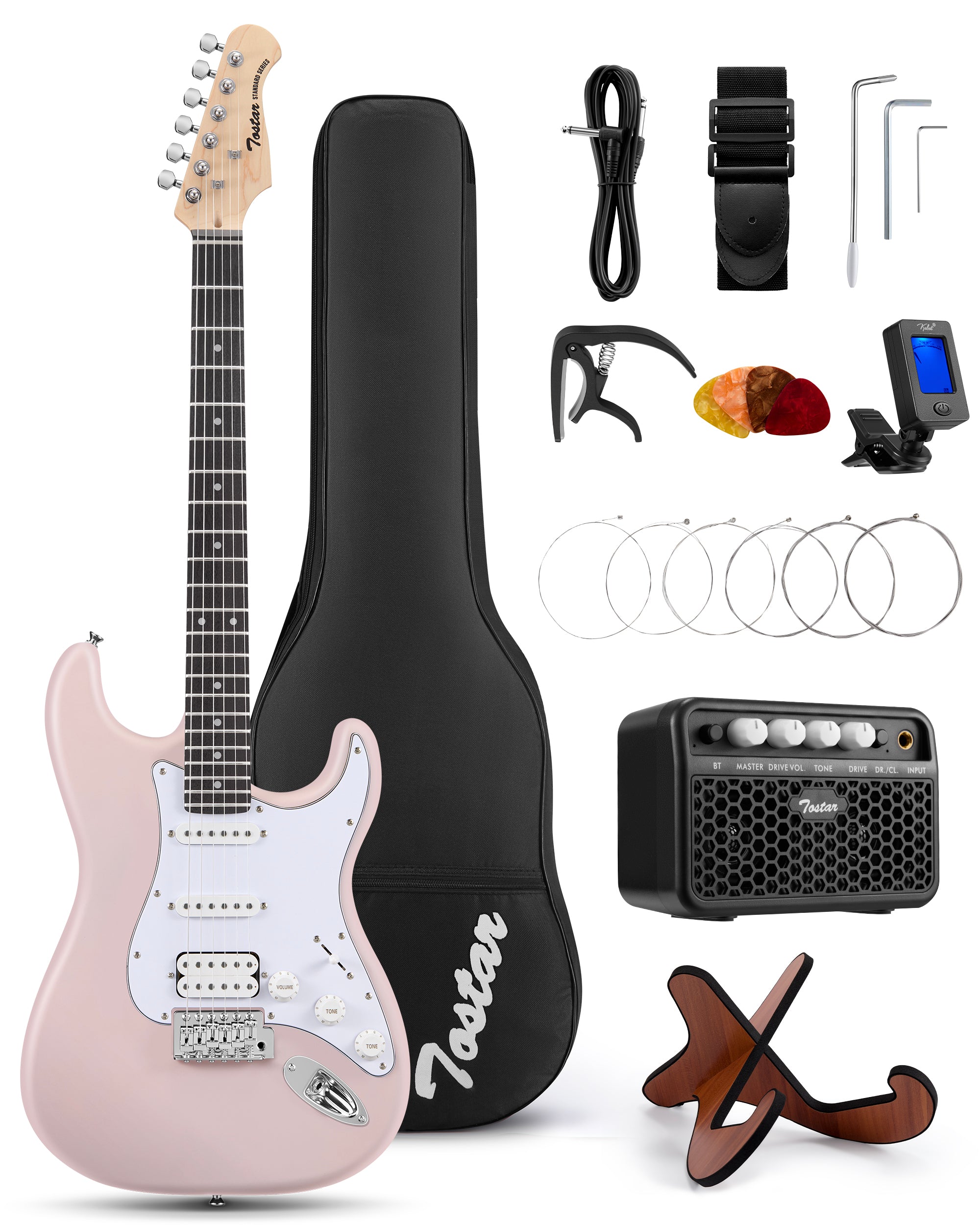

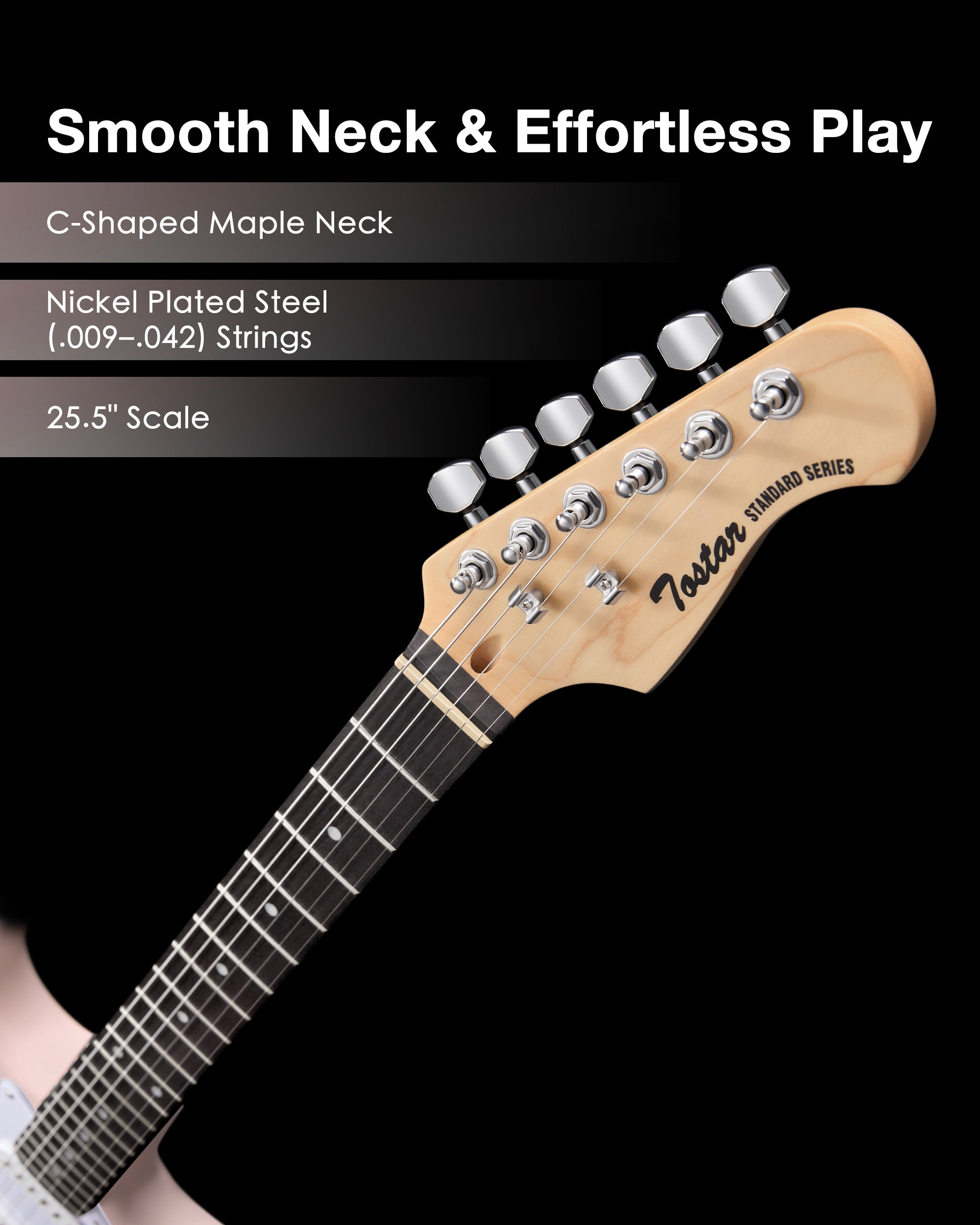


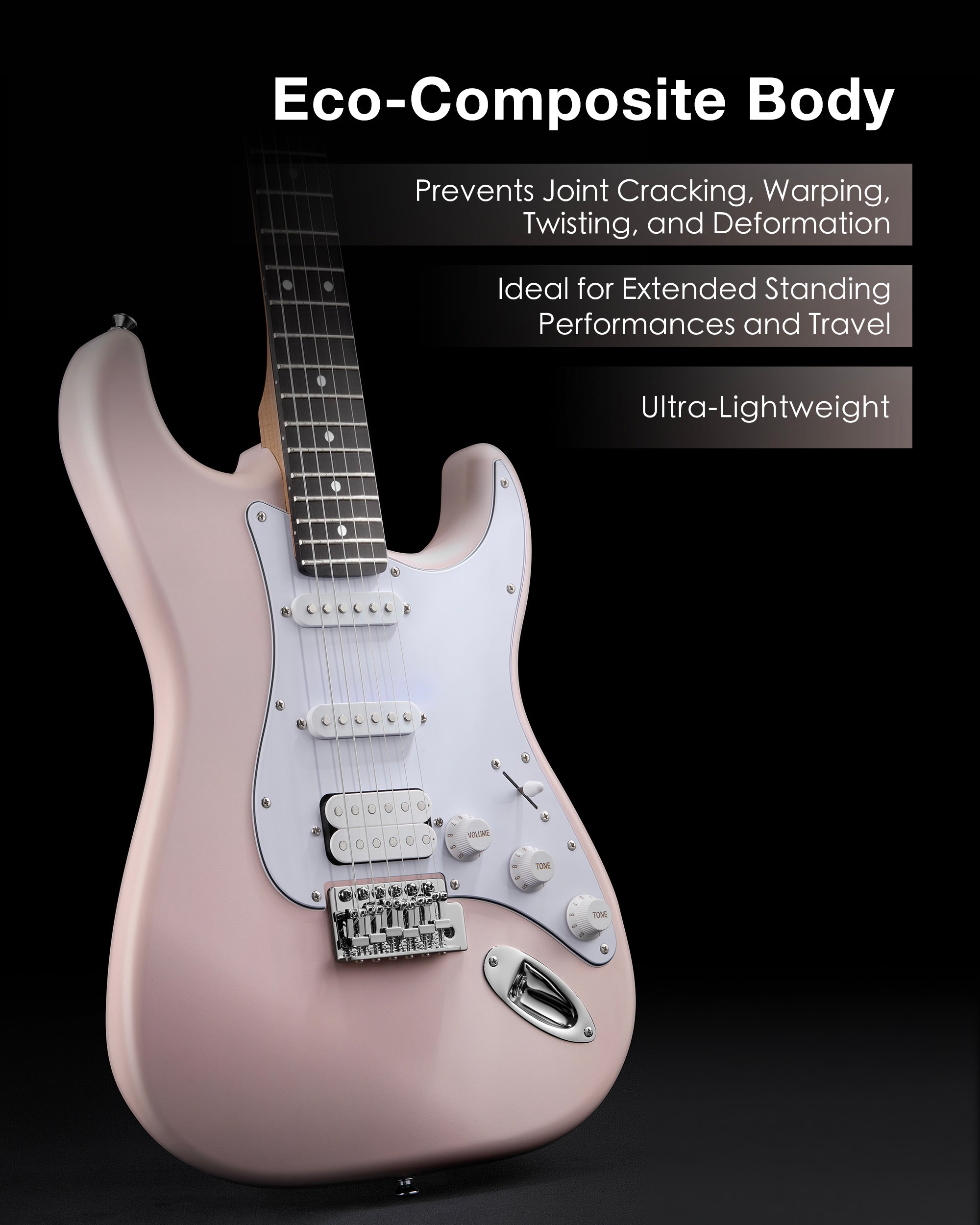


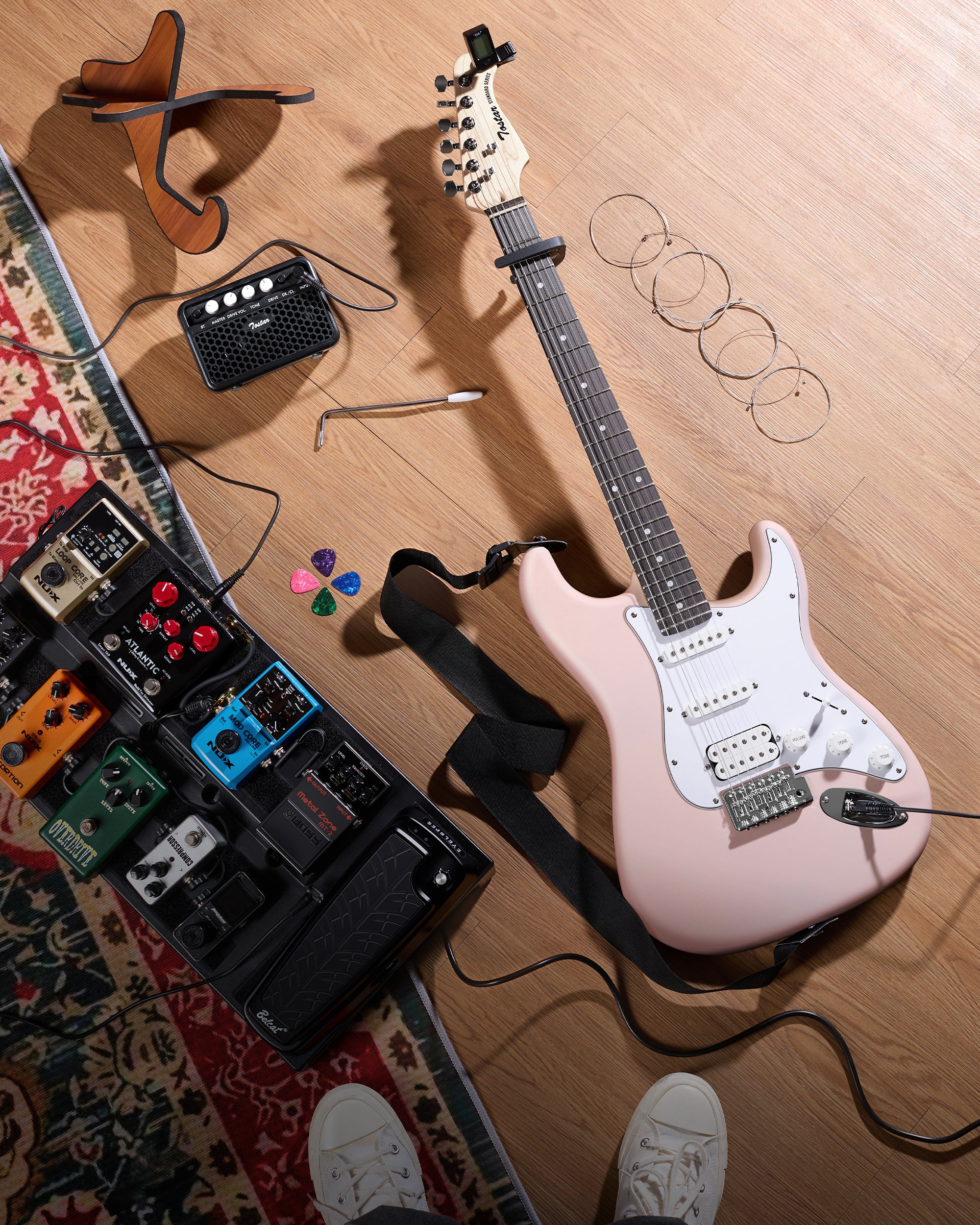
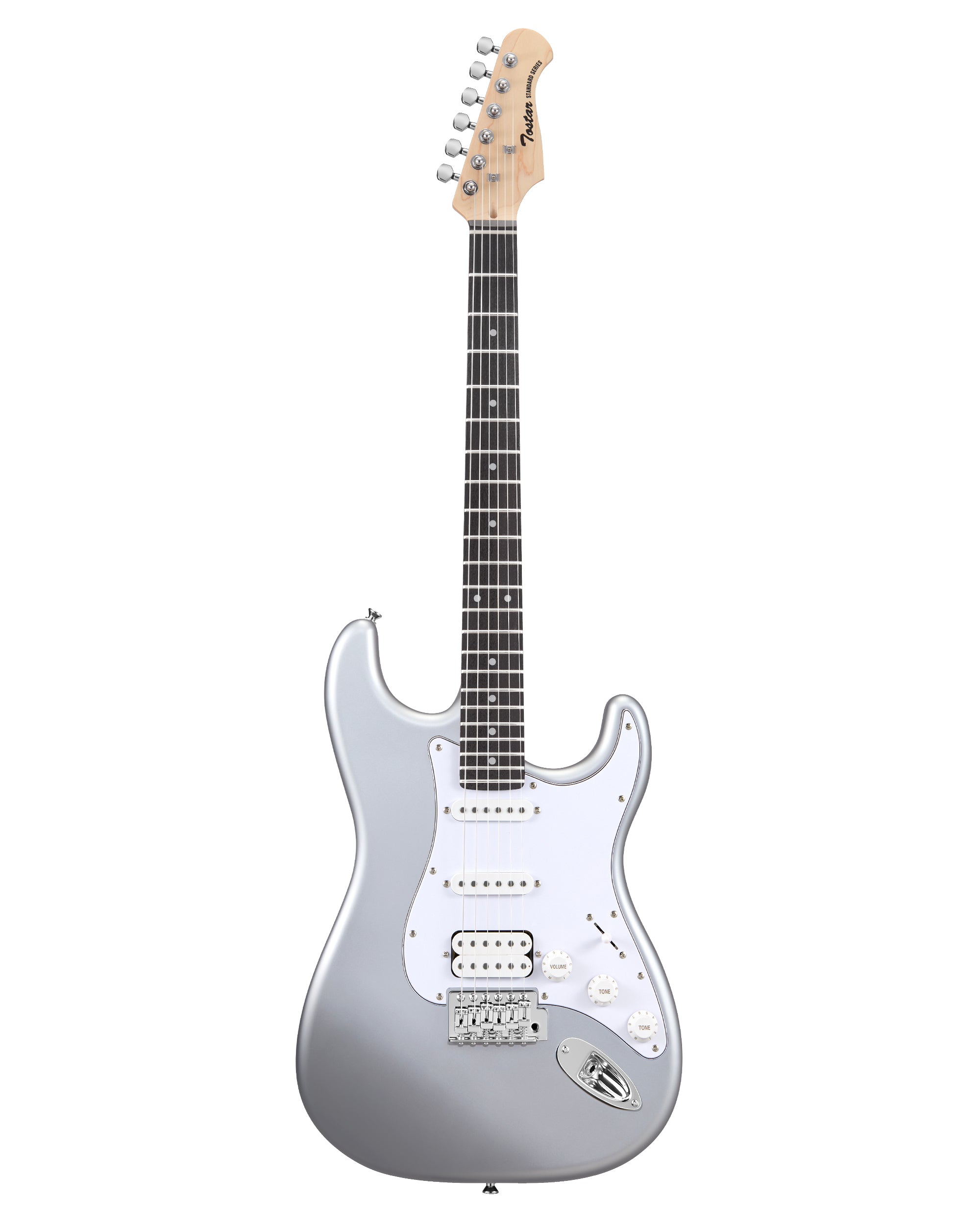
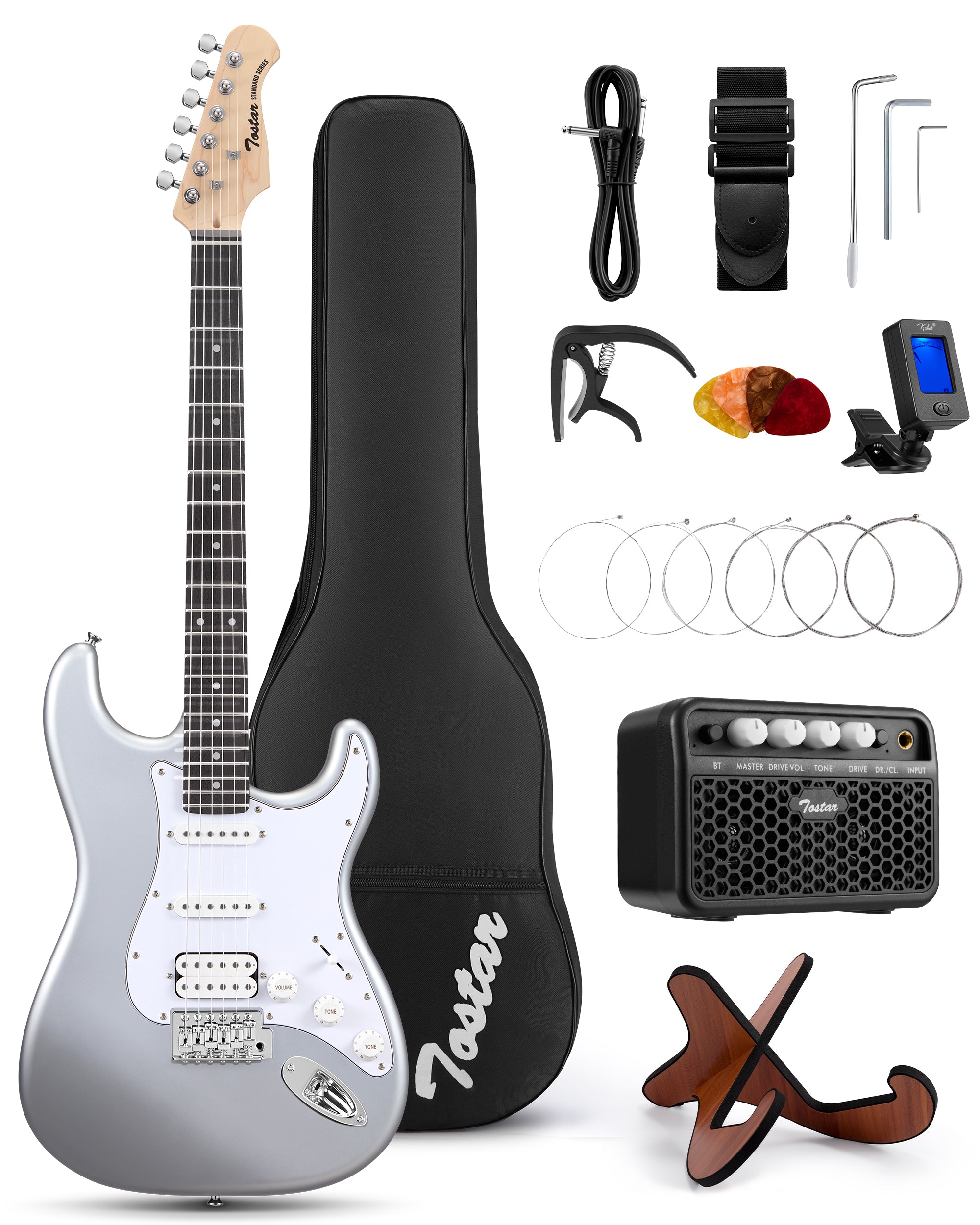
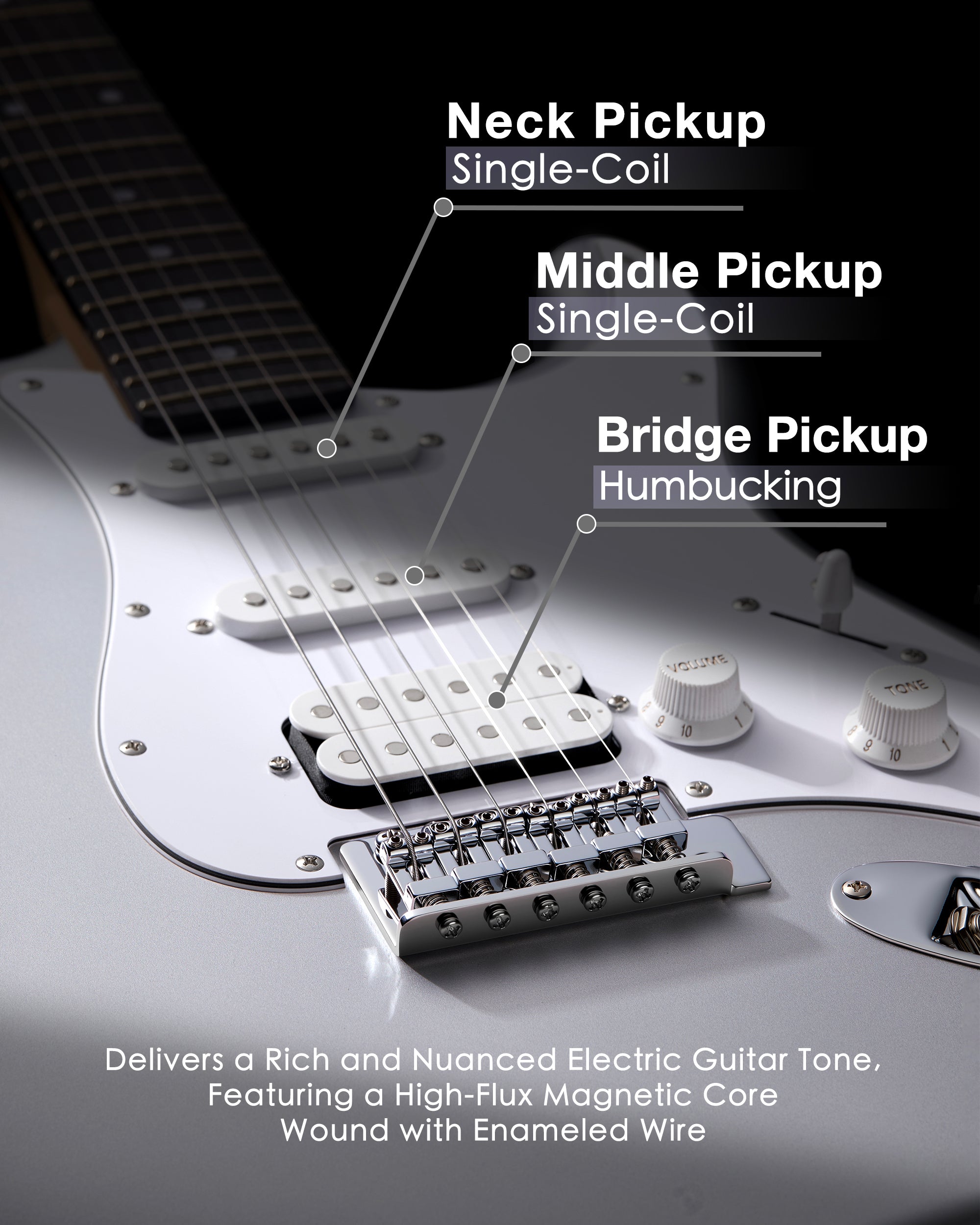
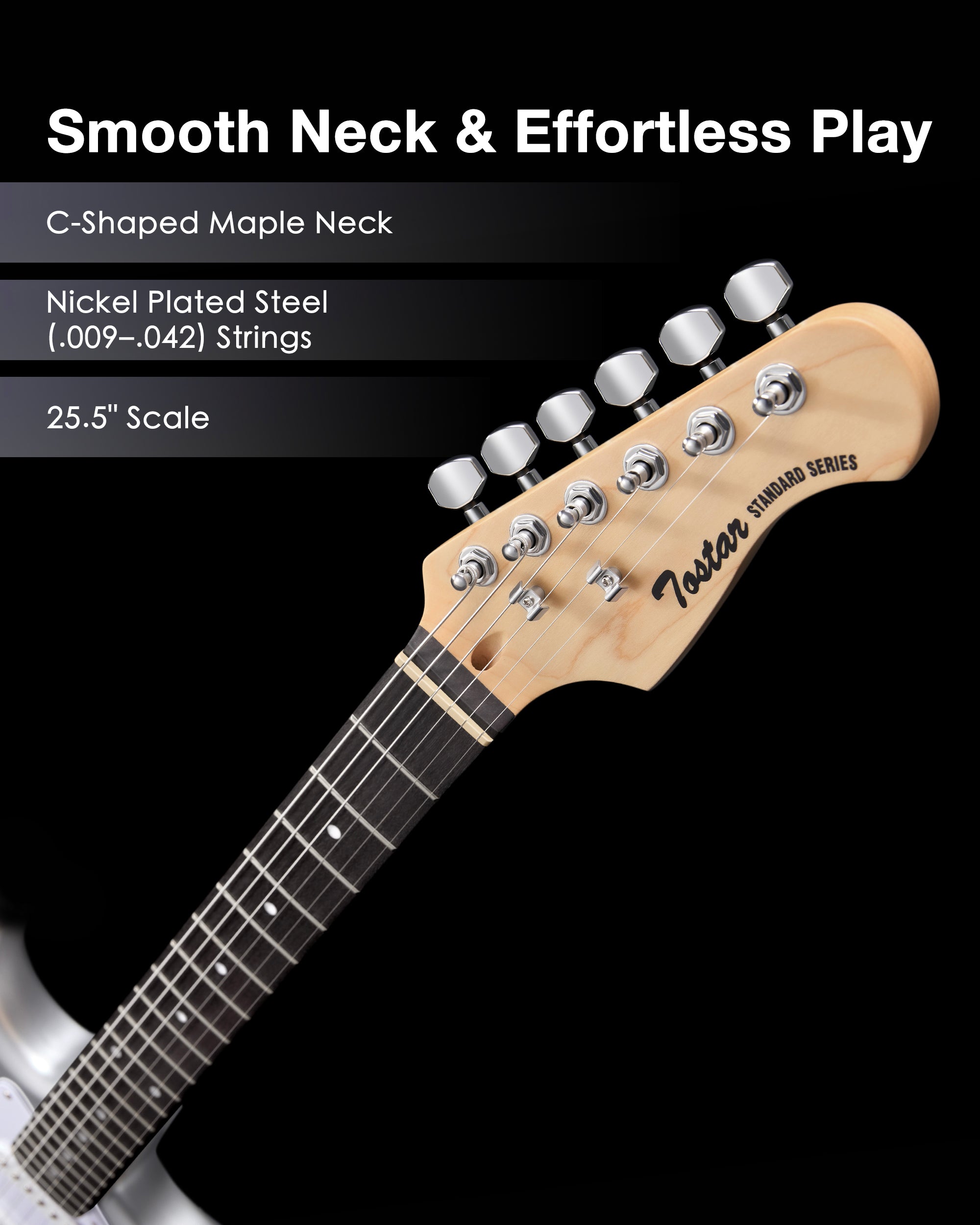





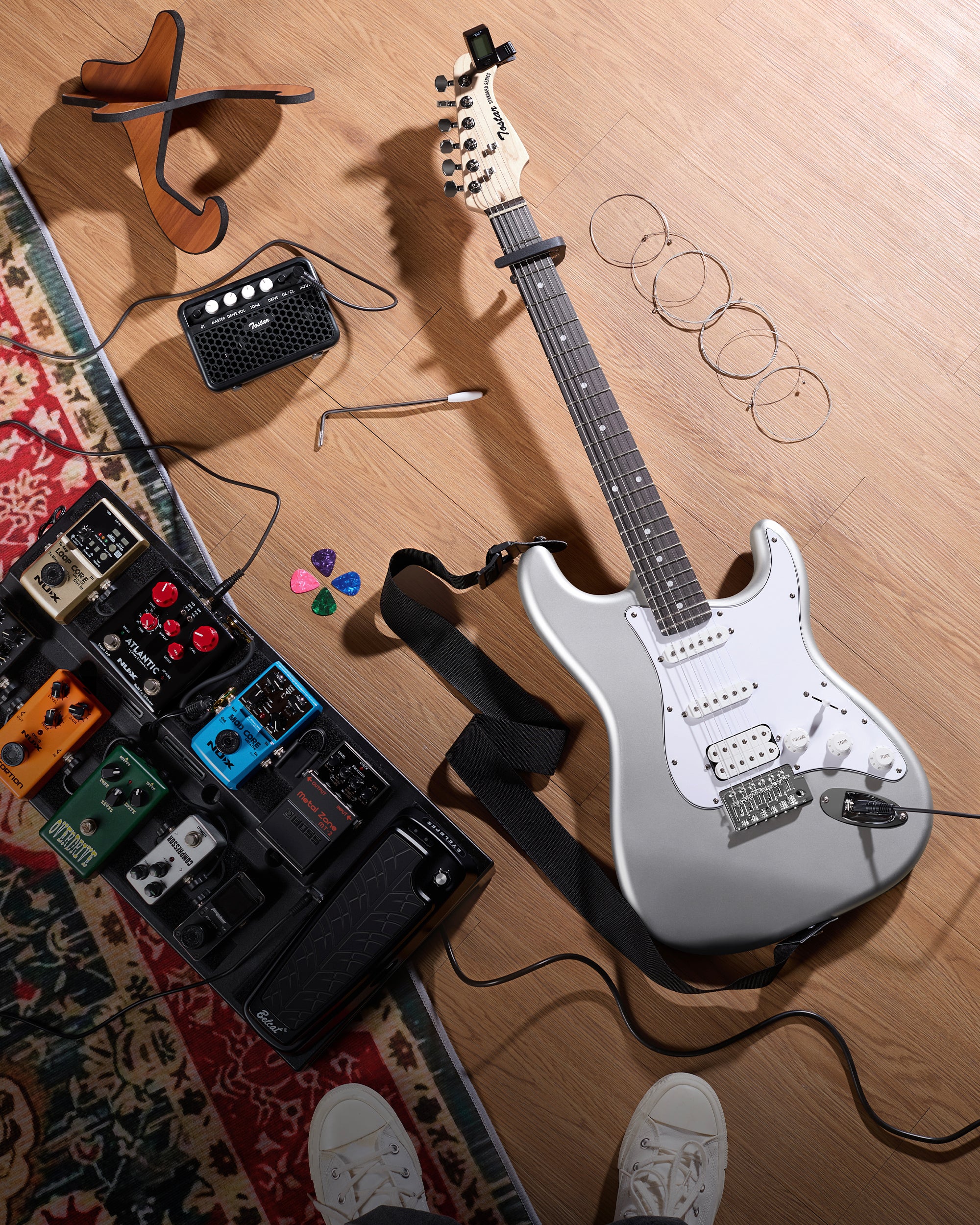
Introducing the New Tostar TST-110 Electric Guitar: Your First Electric Guitar Journey Begins Here
How to Tune an Electric Guitar: A Beginner's Essential Guide